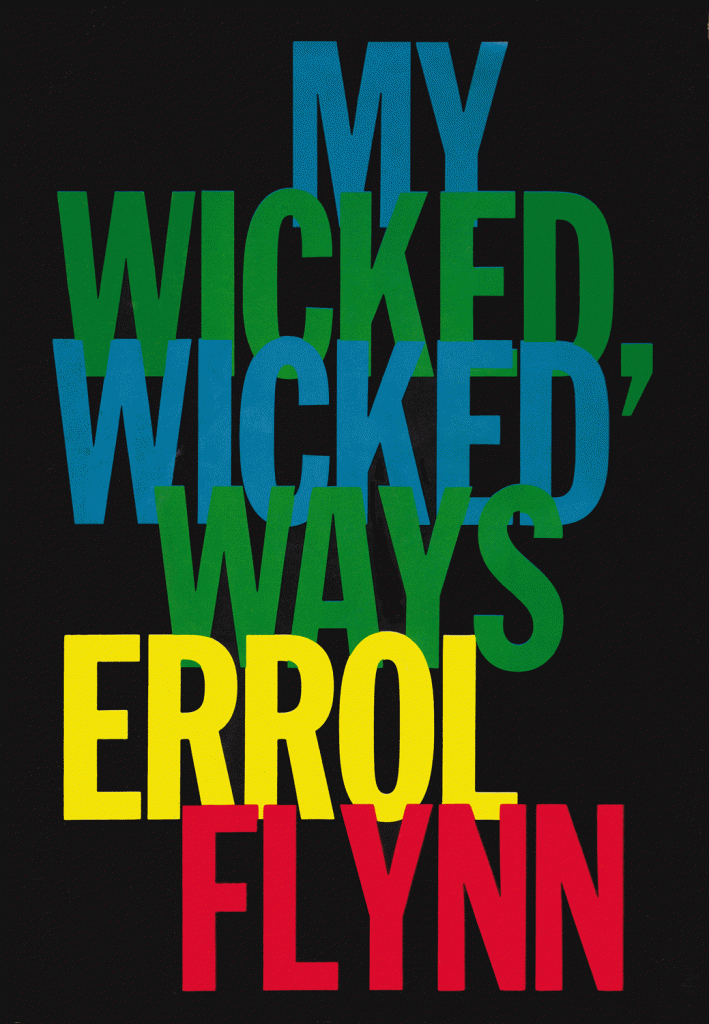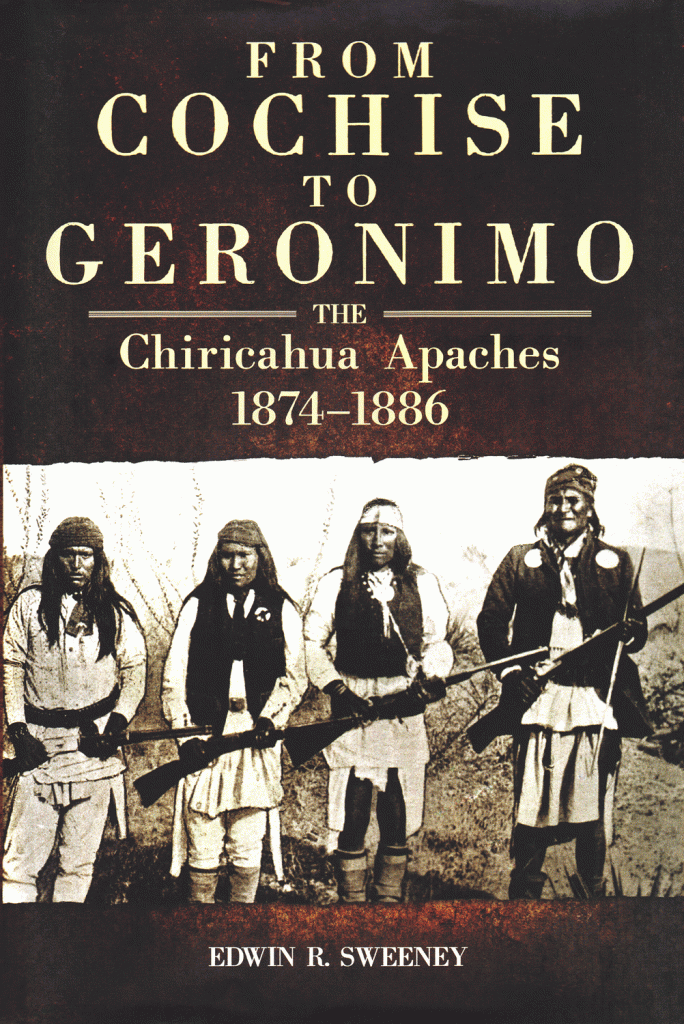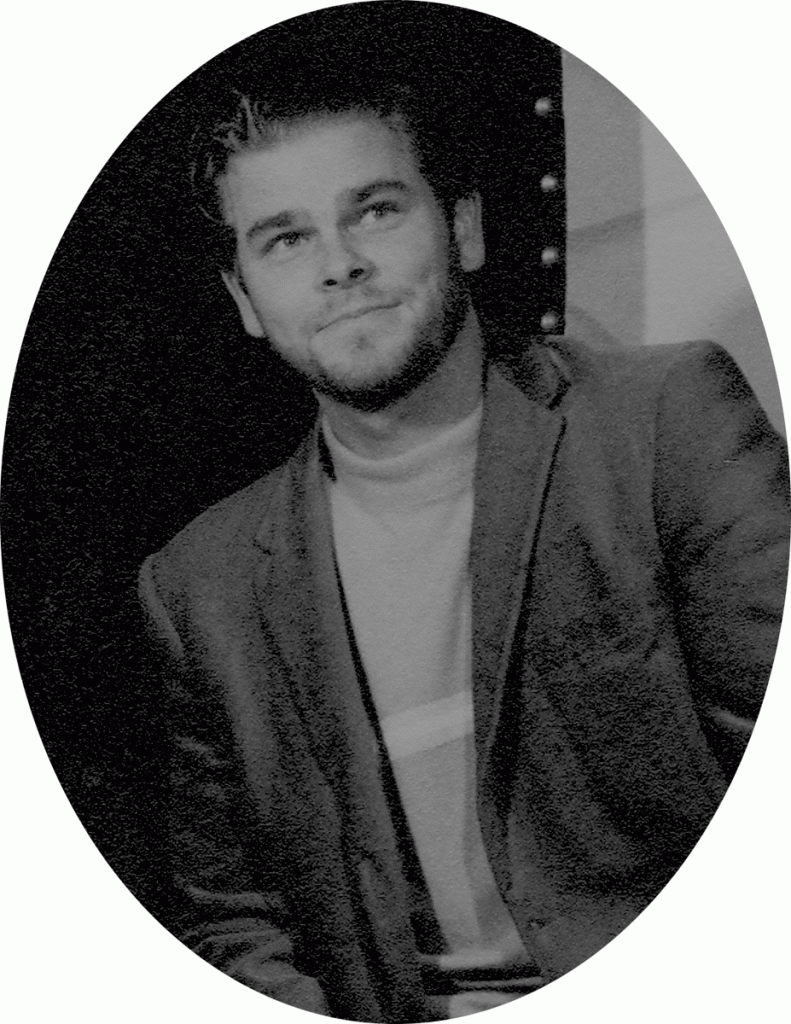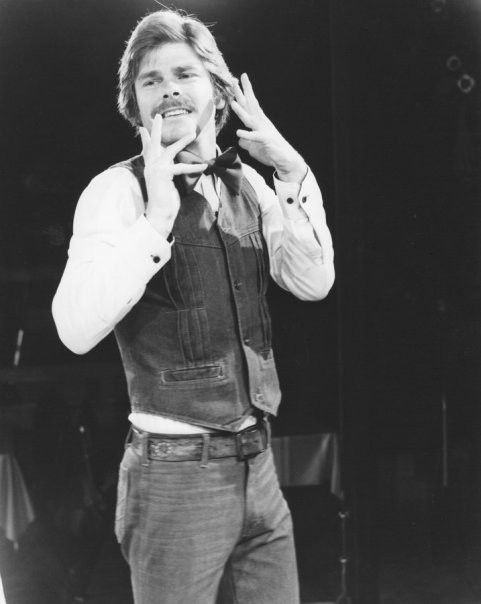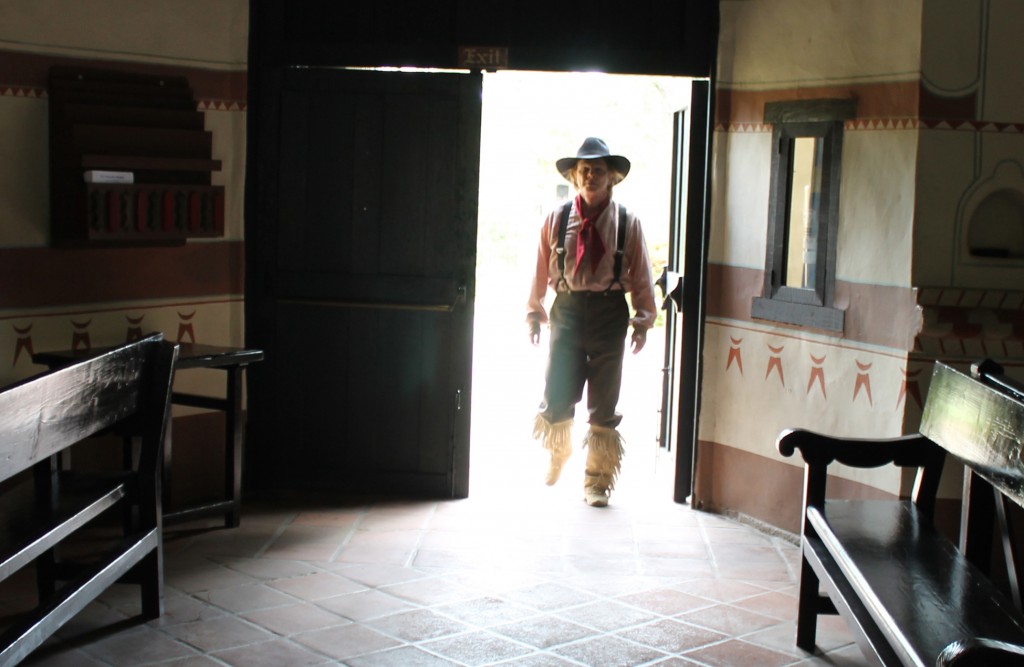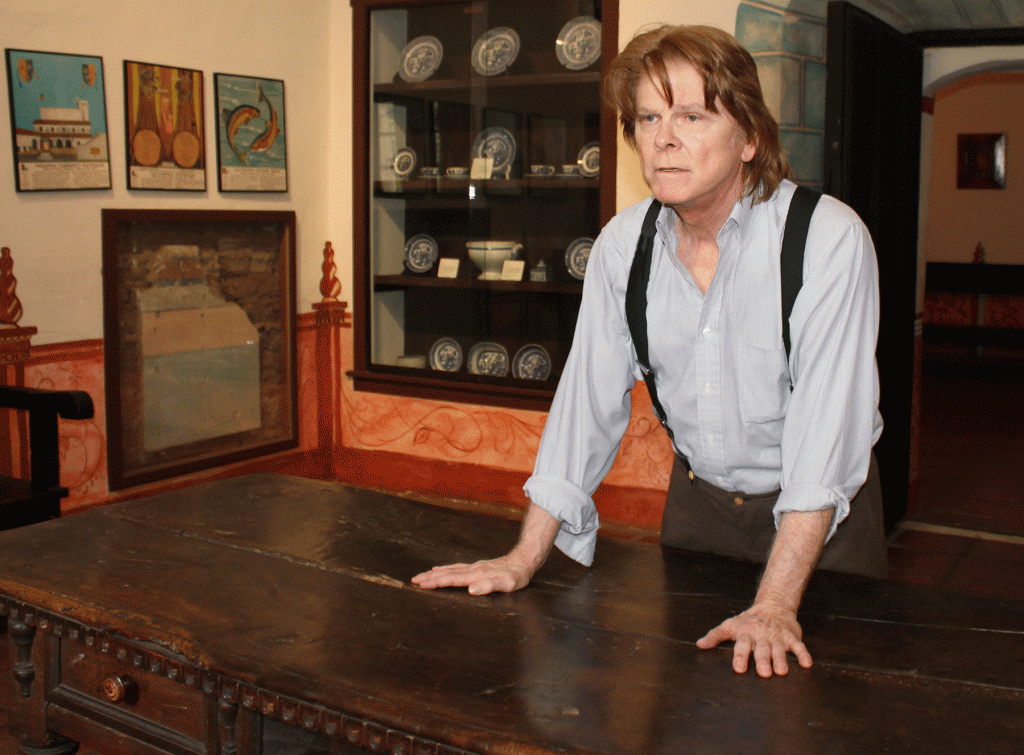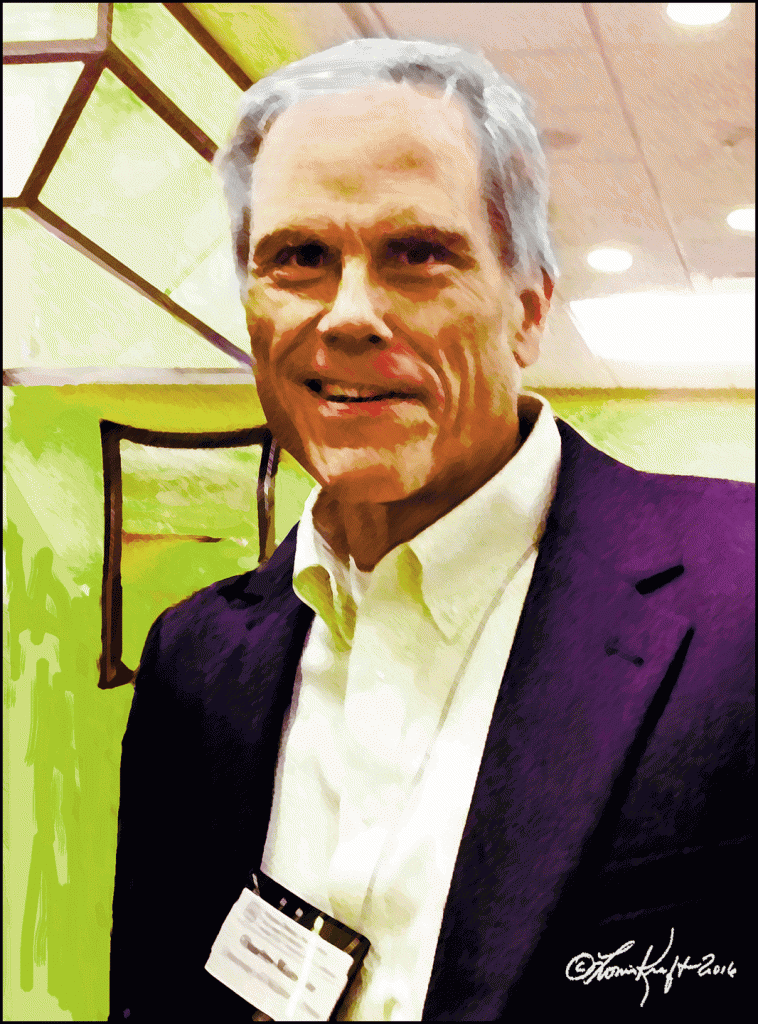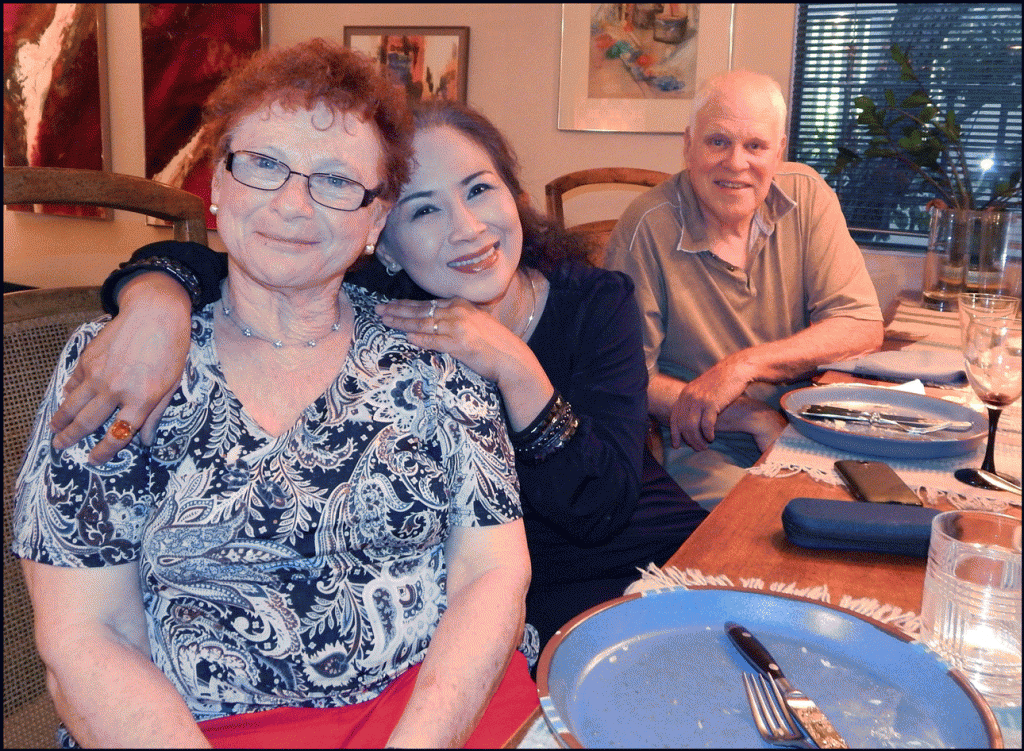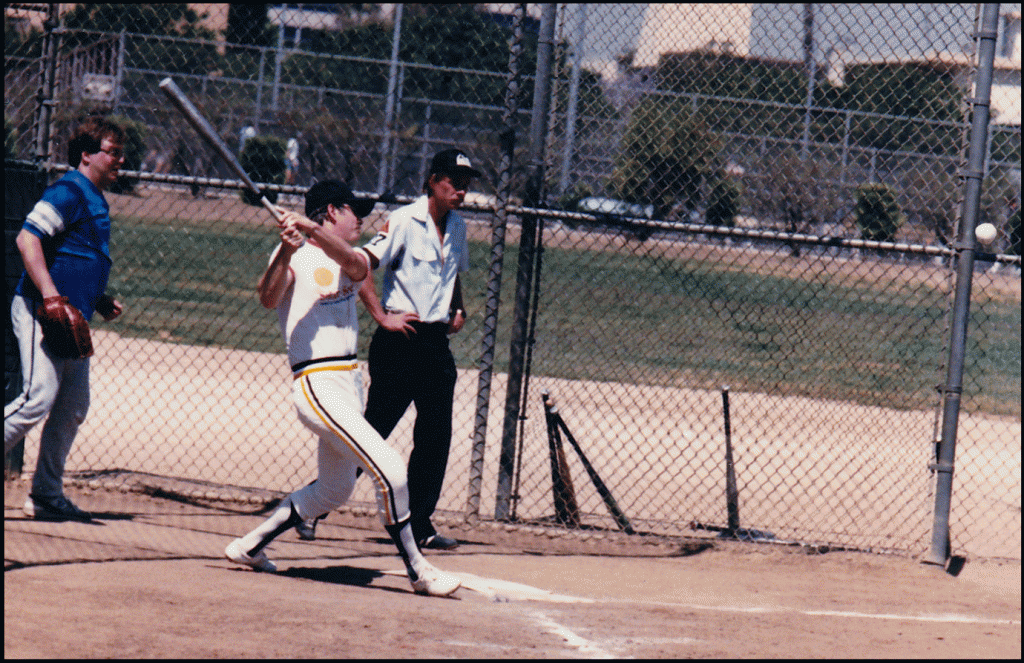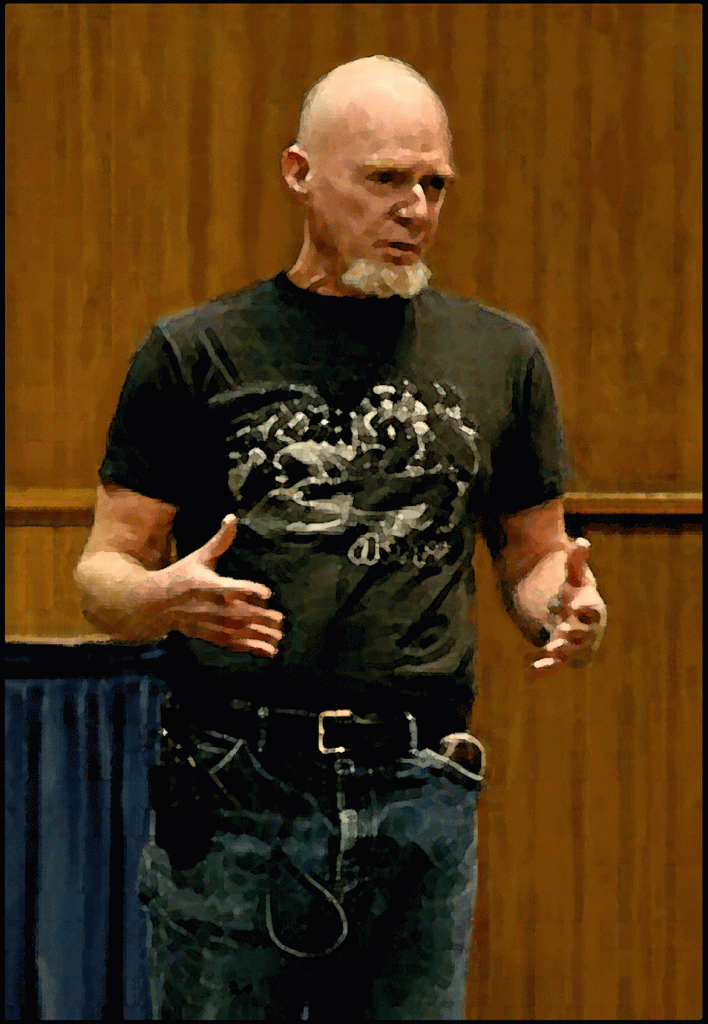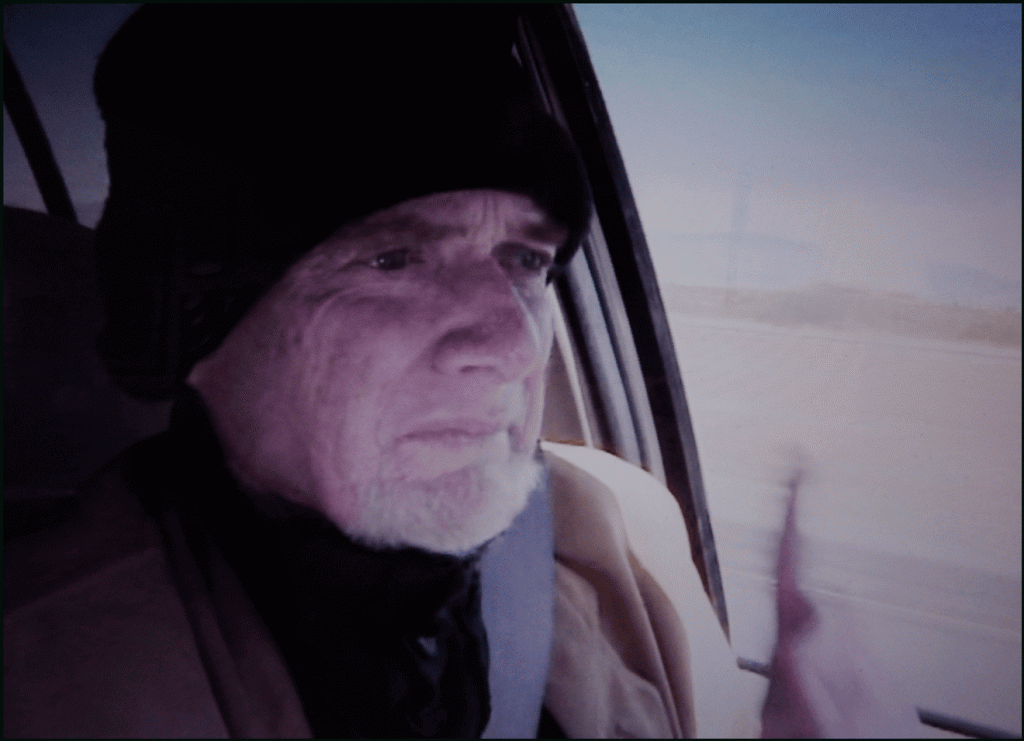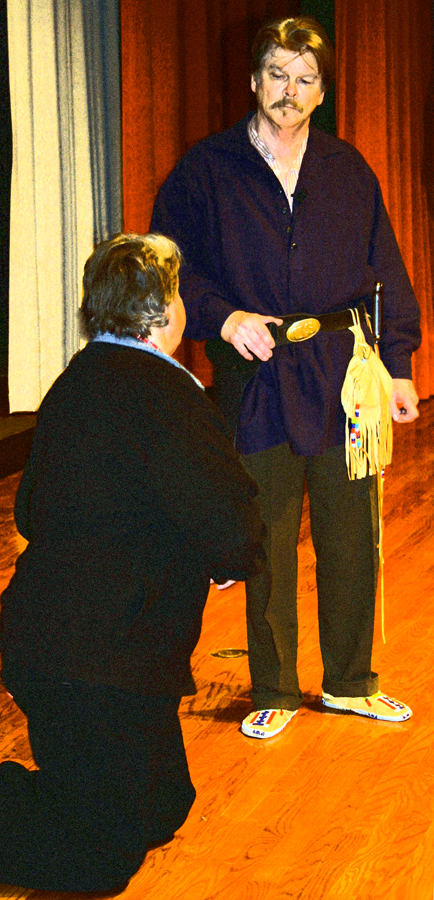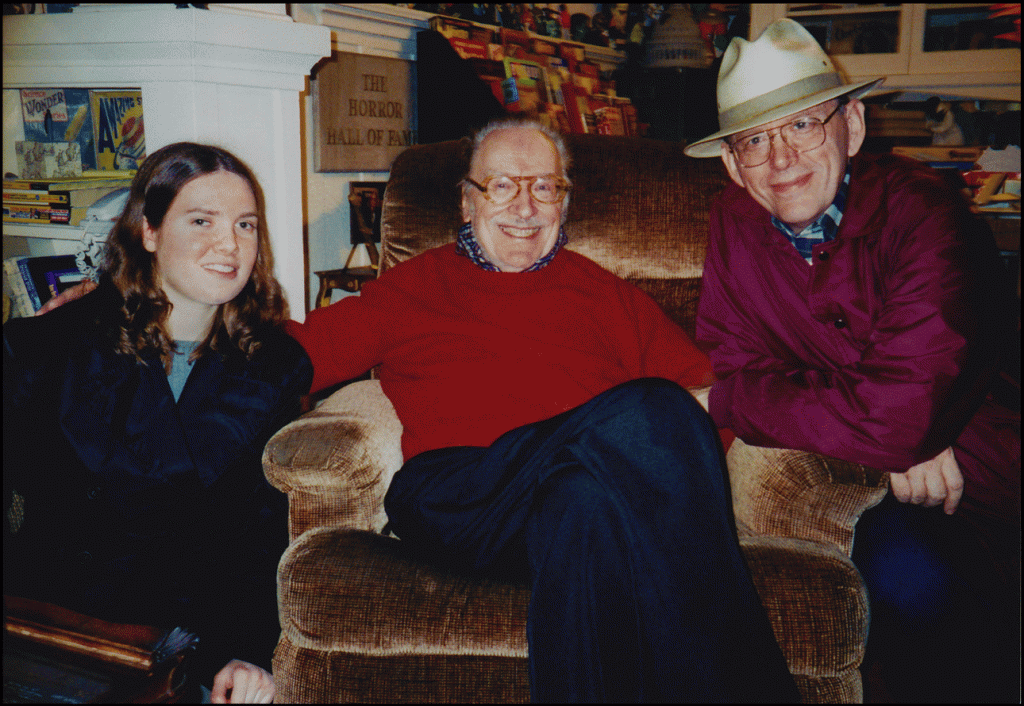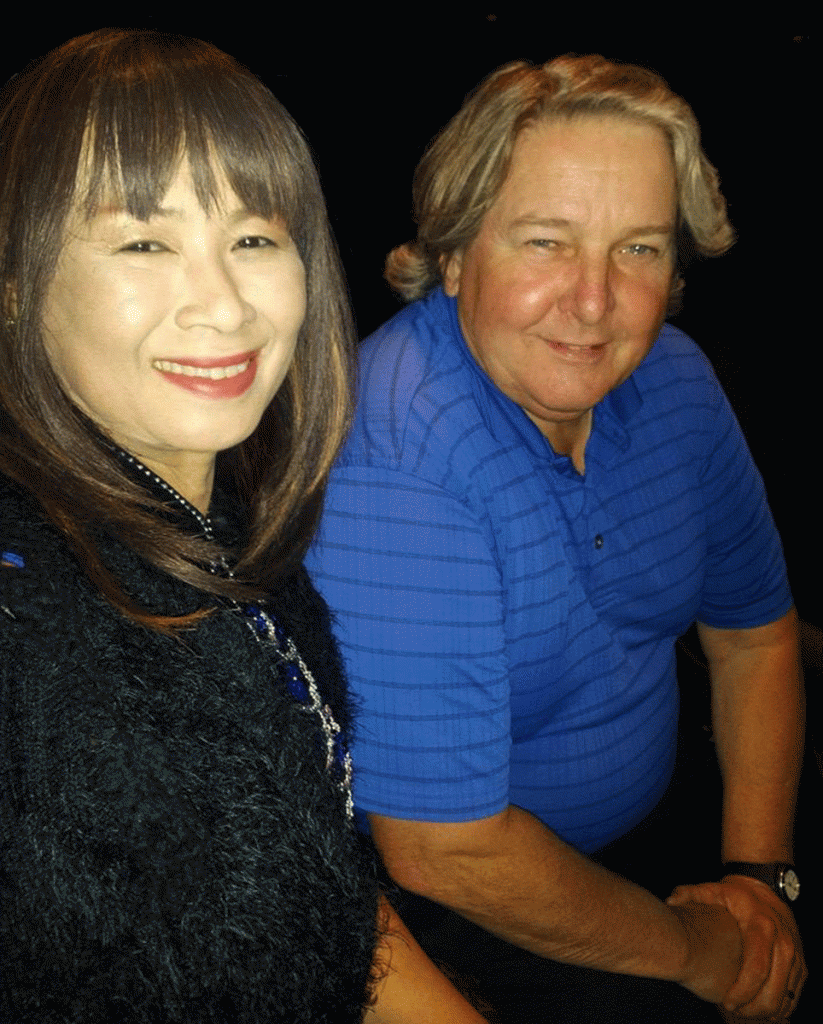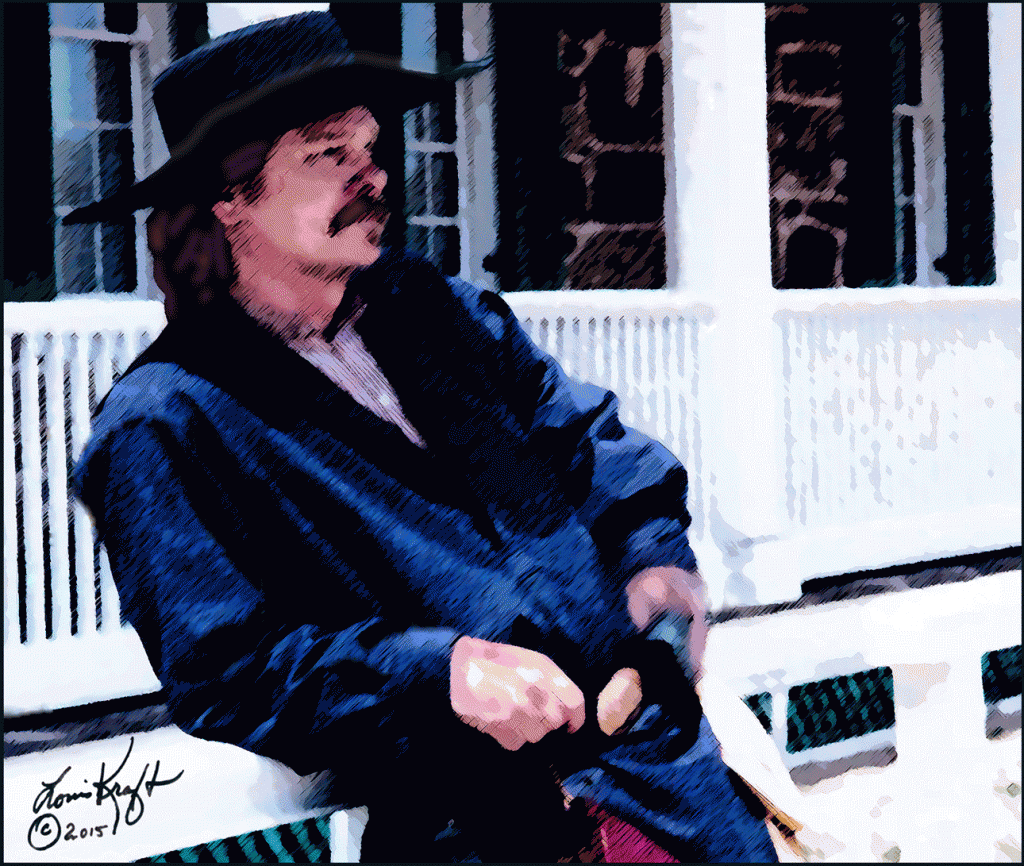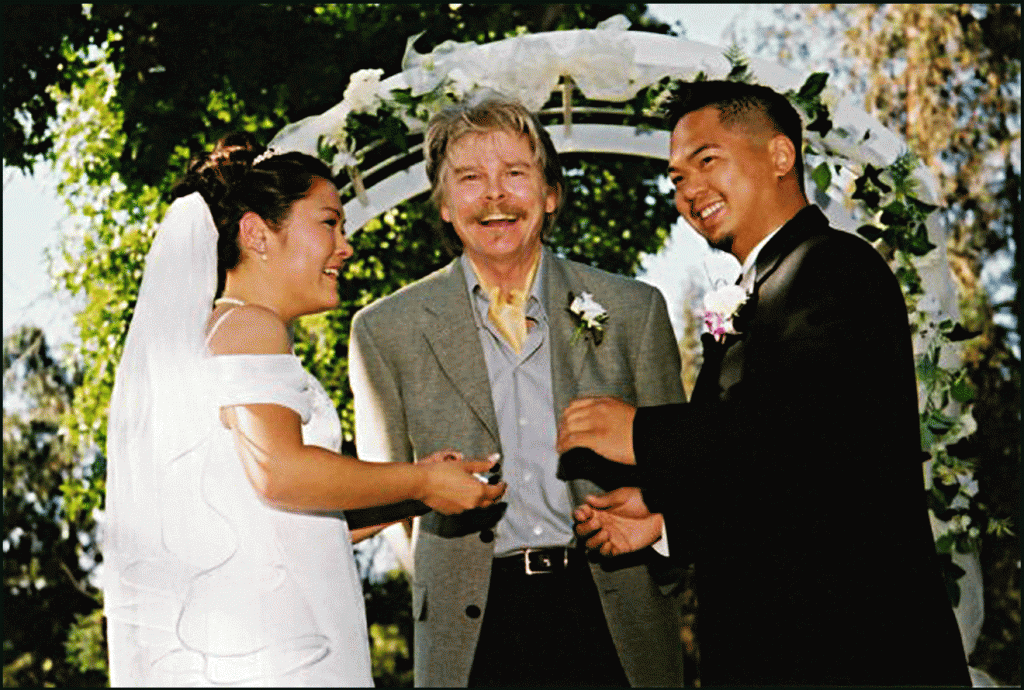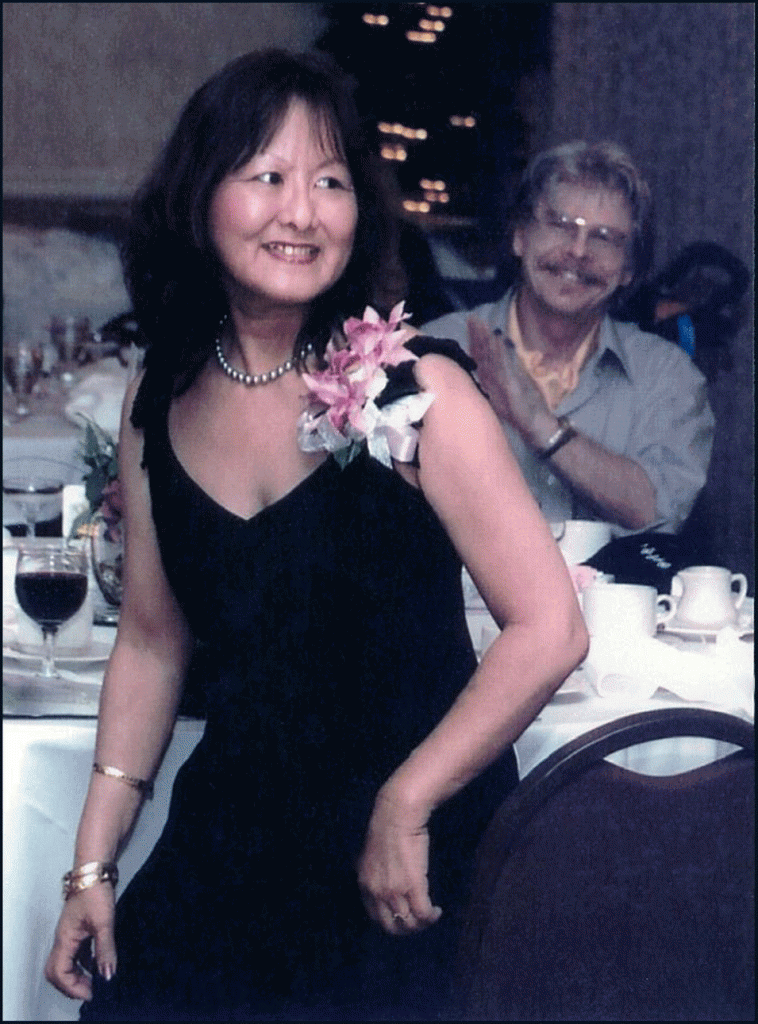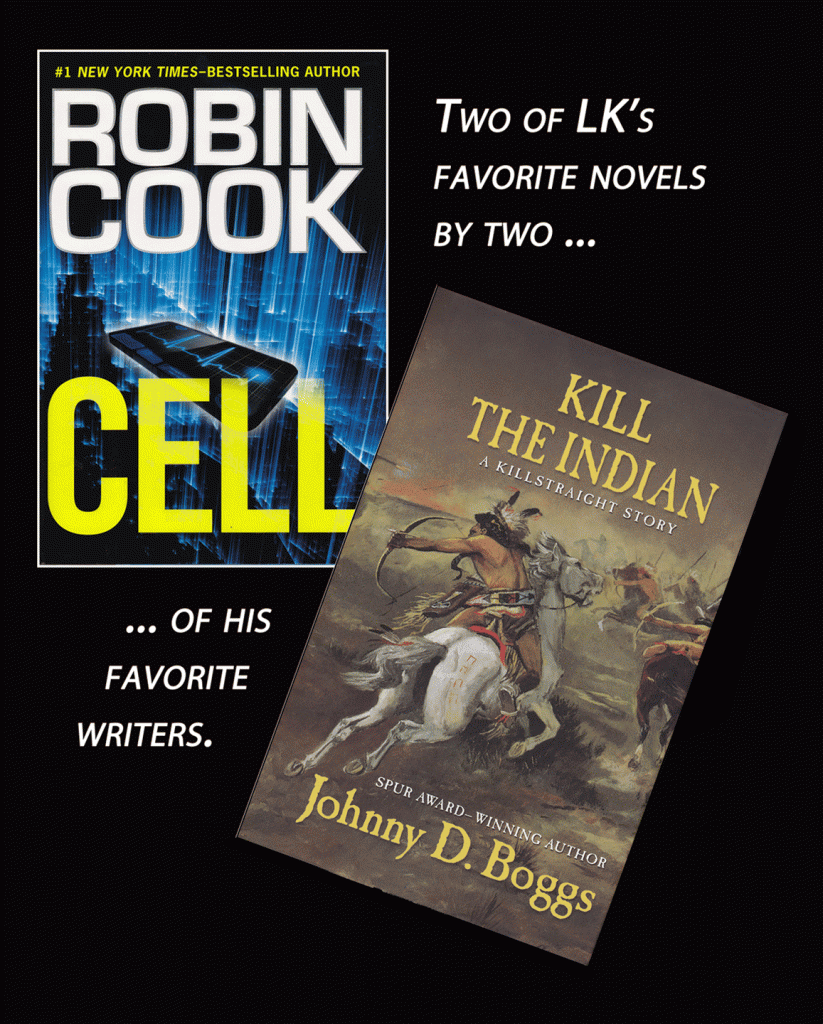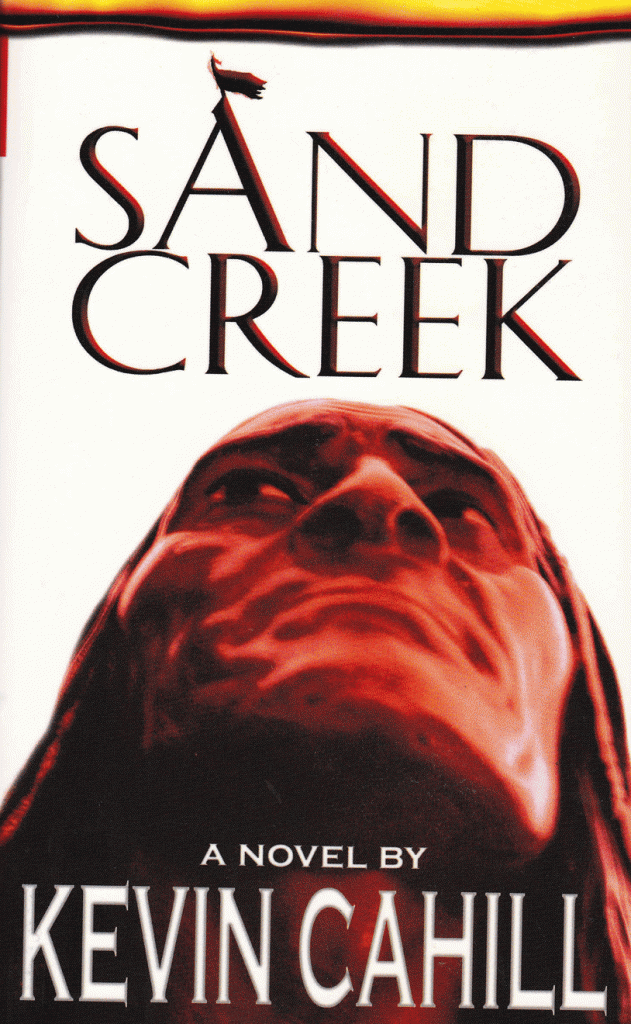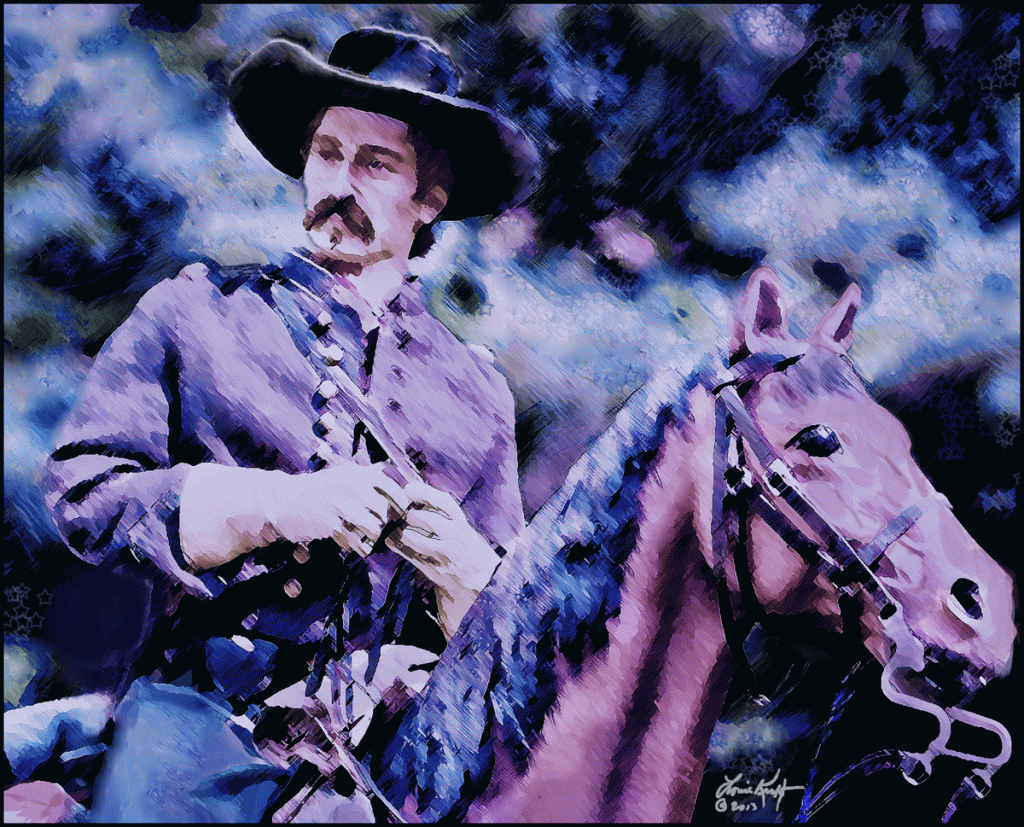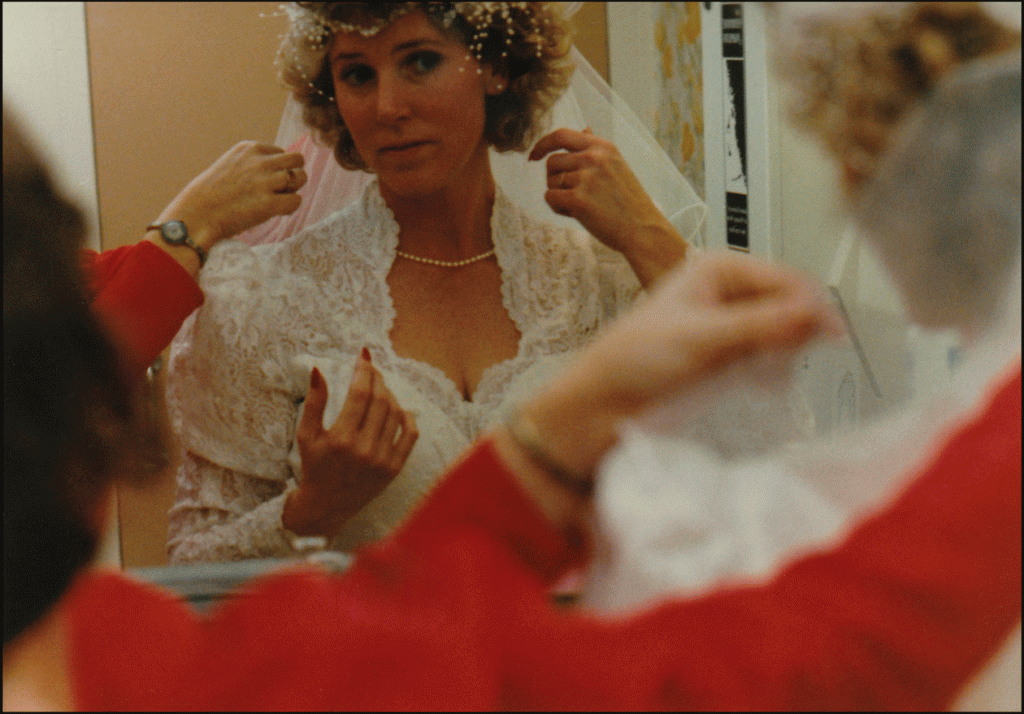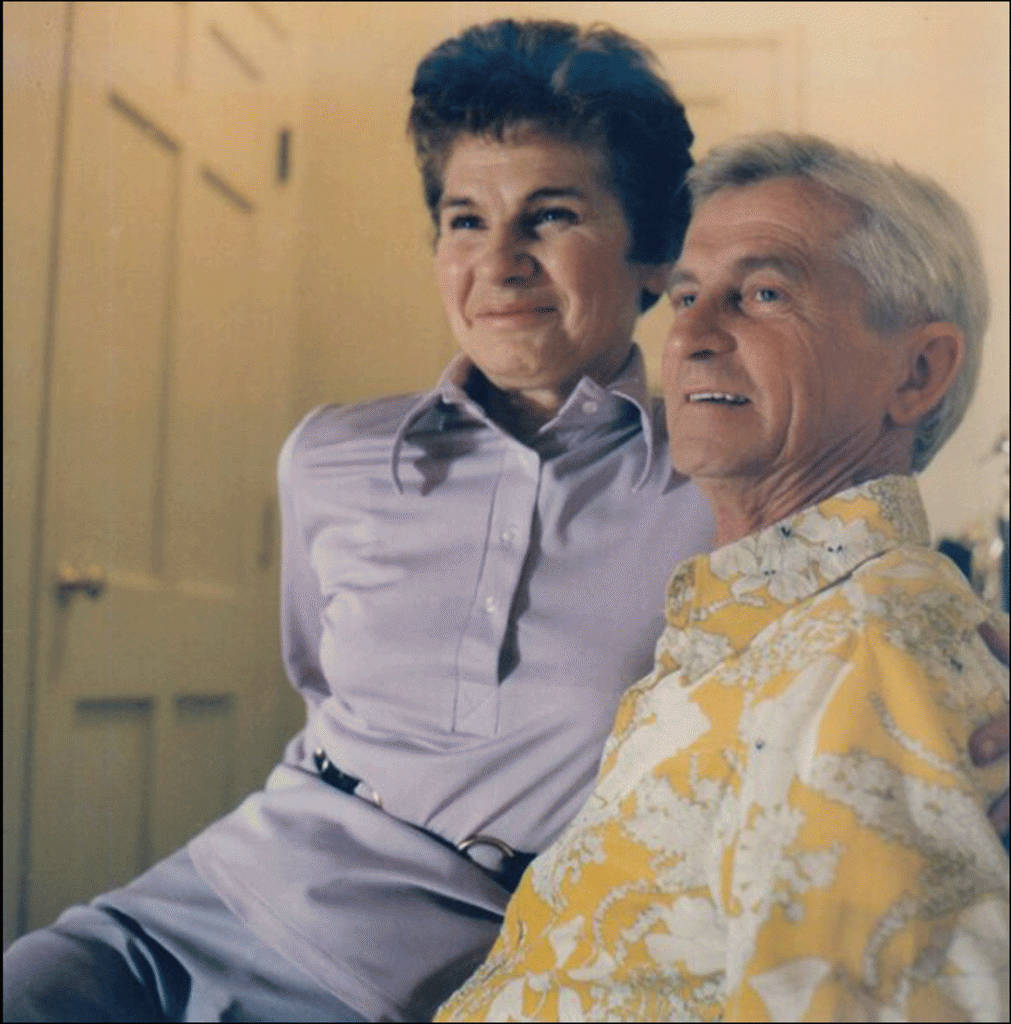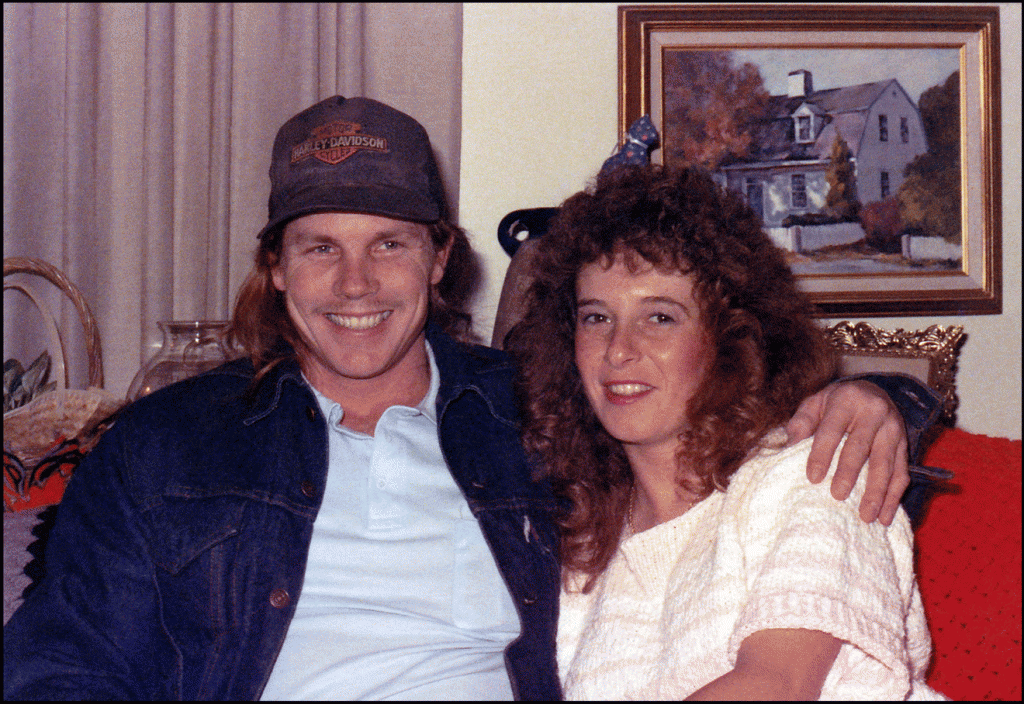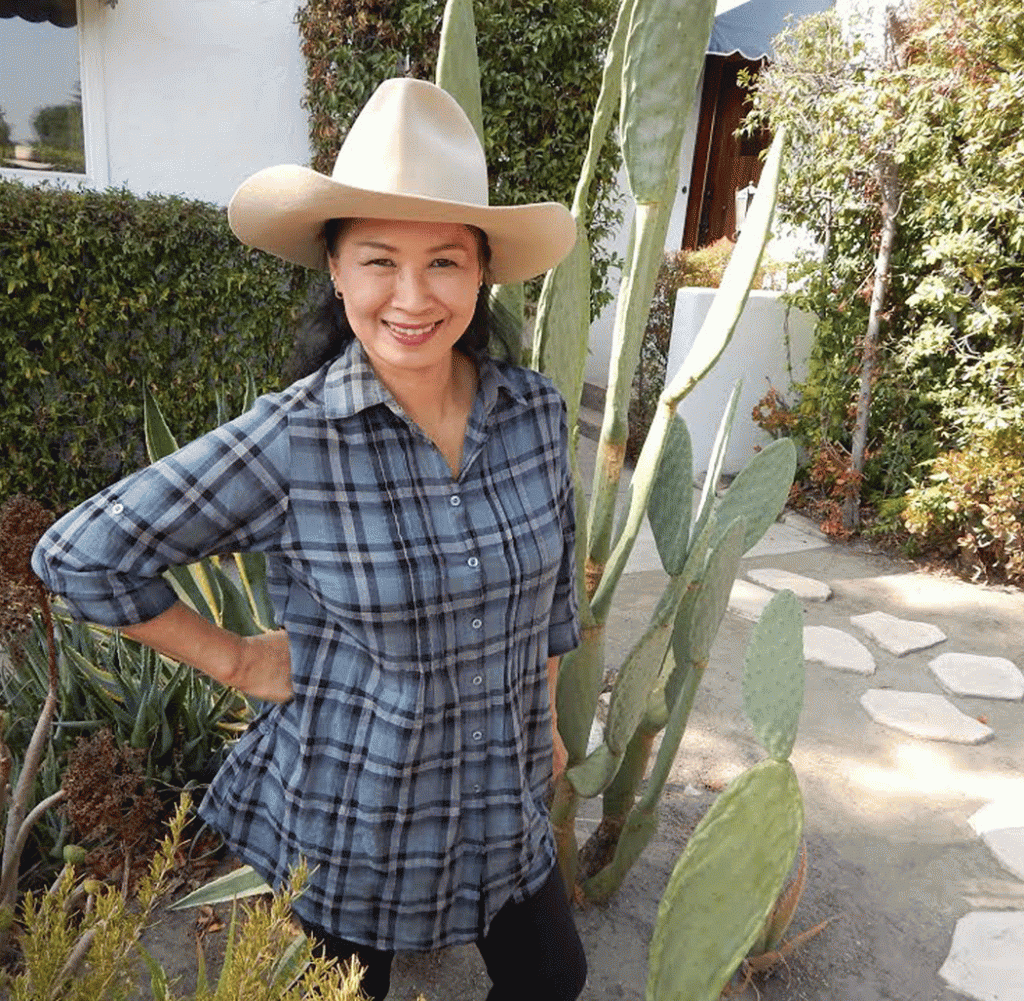Website & blogs © Louis Kraft 2013-2020
Contact Kraft at writerkraft@gmail.com or comment at the end of the blog
Warning: This blog is different than previous blogs
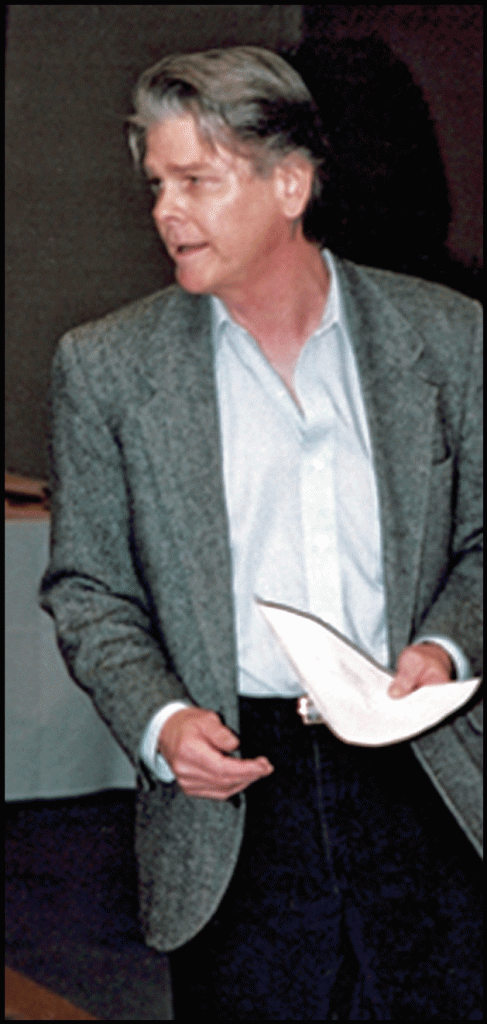
LK (right) reciting a poem per the organizer’s request at the beginning of a symposium in El Segundo, Ca., on 24mar2001. A so-called Little Bighorn battle expert had contacted in the mid-1990s and read a part of his review of my Custer/Stone Forehead book. It was good and he duped me big time. I answered his questions. If a reviewer ever again contacts me with questions I will hang up or delete the email. This man was full of deceit; a hard lesson to learn. This blowhard would speak with me at this symposium. I told the man who organized it to keep him quiet or i would attack him with words. There was no confrontation. This was the beginning of me realizing that what I wrote about would sometimes garner a hostile response. Oh, I spoke about the Custer-Stone Forehead confrontation in March 1869. (photo © Louis Kraft 2001)
Although I get along with people I’m not the biggest joiner. Actually I’m a loner. I’m good all by myself, and I never get bored. Ask anyone who knows me in Los Angeles or anyone I know in the Indian wars world: Writer/historian/speakers, editors, the people that live these tumultuous times today working in museums and at National Historic Sites (NHS) or are what might be considered re-enactors.
Let’s not forget the multitude of fabulous organizations that deal with this time period. They range from professional organizations such as Western Writers of America and the Western History Association to smaller groups that are more focused on specifics of the Indian wars such as the Fort Larned Old Guard, Order of the Indian Wars, and the Little Big Horn Associates (I’ve named a few; there are many-many more similar organizations).
I often help friends and people I don’t know when I can. That is, when I have knowledge of something, or access to someone, that might help their research and writing. See, I’m not a total mercenary. That said, I need to earn money. The reason is simple: My earning power is now about 25 percent of what it once was. Besides I like to eat once in awhile, and my car loves to gulp gasoline.
For those of you that don’t know how I choose my freelance writing subjects, it’s quite simple. Race relations is the joining thread. Certainly with my Indian wars writing (although Errol Flynn seems a strange choice to be one of my subjects, he was the most un-racial person I have ever written and spoken about—no one comes close to him, no one). In case you don’t know, I basically write biographies while moving easily into other writing formats when I feel like it.
 This is Ivan Hankla. He is a Southern Cheyenne who opened his lodge and heart to me in 2004 when I spoke at a two- or three-day event at Fort Larned NHS, Kans. Other than time required for my participation in the event I spent all my time with Ivan and James Coverdale, a Kiowa. This cemented a lasting relationship with Ivan (who, unfortunately, died a few years back). His tepee was a fully functional lodge as it would have been in the 1860s. He allowed me to photograph it and him over these days. My talk was on the last day and it dealt with George Armstrong Custer riding into the still warring Cheyenne village on Sweetwater Creek in the Texas panhandle in March 1869. More specifically it dealt with Custer’s meeting with Stone Forehead, the Southern Cheyenne chief, mystic, and keeper of the Cheyenne medicine (or sacred) arrows. Custer had an adjutant with him. At any time the Cheyennes could have killed him (and perhaps they might have died for doing it, but I don’t think so for the soldiers’ horses were as jaded as the �Southern People’s mounts). I invited Ivan and James to the talk. Ivan told me that they weren’t paid participants of the event. I told him not to worry, that he and James were my guests. If they weren’t admitted to the talks and I couldn’t fix the problem that I wouldn’t speak (oh boy, there’s black mark against the Kraft name). There were no problems and they attended in full regalia. A good day for LK to be alive. (art © Louis Kraft 2014)
This is Ivan Hankla. He is a Southern Cheyenne who opened his lodge and heart to me in 2004 when I spoke at a two- or three-day event at Fort Larned NHS, Kans. Other than time required for my participation in the event I spent all my time with Ivan and James Coverdale, a Kiowa. This cemented a lasting relationship with Ivan (who, unfortunately, died a few years back). His tepee was a fully functional lodge as it would have been in the 1860s. He allowed me to photograph it and him over these days. My talk was on the last day and it dealt with George Armstrong Custer riding into the still warring Cheyenne village on Sweetwater Creek in the Texas panhandle in March 1869. More specifically it dealt with Custer’s meeting with Stone Forehead, the Southern Cheyenne chief, mystic, and keeper of the Cheyenne medicine (or sacred) arrows. Custer had an adjutant with him. At any time the Cheyennes could have killed him (and perhaps they might have died for doing it, but I don’t think so for the soldiers’ horses were as jaded as the �Southern People’s mounts). I invited Ivan and James to the talk. Ivan told me that they weren’t paid participants of the event. I told him not to worry, that he and James were my guests. If they weren’t admitted to the talks and I couldn’t fix the problem that I wouldn’t speak (oh boy, there’s black mark against the Kraft name). There were no problems and they attended in full regalia. A good day for LK to be alive. (art © Louis Kraft 2014)
I think I should mention the images in this blog. There will be three types:
- Cheyennes and Indian wars people: Friends, acquaintances, but with one ongoing link and that is our connection started with and/or continues because of what I write about the 1860s Cheyenne wars.
- Collages that hopefully present background that I know a fair amount about Ned Wynkoop, Cheyennes, the 1860s, and the Wynkoop/Cheyenne connection.
- Publicity for my writing (sorry).
The goal of these images is simply to show with as little words as possible who I am and my connection to Wynkoop and the Cheyenne people.
Before moving forward I want to make the following clear.
Two national historic sites have been good to me over the years:
The Washita Battlefield NHS (Okla.) and the Fort Larned NHS (Kans.). What
follows has nothing to do with them. I’m proud to have spent hours walking
their grounds and hanging out with their staffs (some of whom have
become good friends). They have been responsible for bringing me
to Oklahoma and Kansas over and over again.
Good times; some of the best in my life.
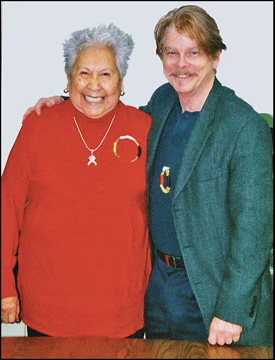
Dr. Henrietta Mann is the founding president of the Cheyenne and Arapaho Tribal College in Weatherford, Okla. Her resume is amazing and it covers the entire spectrum of education, including lecturing throughout the United States and the world. In 1991 the magazine Rolling Stone named her one of the top 10 professors in the U.S. She has served as technical consultant on numerous documentaries and a film I like: Last of the Dogmen (1995), which had the premise of Cheyenne Dog Men surviving the Sand Creek Massacre and living as they had in 1864 undiscovered into the 20th century. On 6dec2008, Henri listened to a talk I gave on Wynkoop and his relationship with the Cheyennes. She told me that I was her hero (let me tell you that after I heard her talk that night about the Cheyennes she became my heroine). Anyway, after I spoke on that December 6 morning we spent a lot of time together (and it cemented a friendship that continues to this day). We posed for this image right after we finished our lunch. I had met Henri the previous day (5dec2008) when she saw a performance of my Wynkoop one-man show at the three-day Washita Battlefield NHS symposium. (Photo © Leroy Livesay 2008)
Early April 2014 and a request
A friend sent me a draft of a National Park Service (NPS) two-page Ned Wynkoop brochure and asked if I’d review it. Wow, what a great idea: a Wynkoop brochure specifically created for the Sand Creek Massacre NHS and the Fort Larned NHS. I jumped at the chance with the hope that I could offer assistance to help the brochure shine.
Boy, was that ever a lofty ambition. Poof! Gone, long-time gone in a matter of minutes.
After reading only a handful of sentences I realized that the people who wrote the Wynkoop brochure didn’t do any real research (although I heard that the person who drafted the “Final Years” section did research Mr. Wynkoop). My guess is that the other writer(s) got most of their information off the internet (Oh nooooooo!!!). Put kindly the two pages were little more than error-riddled prose that would be lucky to receive a passing grade in a high school English class. And those leading the project put it out for review! What were they thinking? … Oh, and if I didn’t mention it, I assume that the purpose of the brochure was and is to introduce Wynkoop and his relationship with Cheyennes and Arapahos to the general public. If yes, this brochure has failed terribly. Other than needing facts that are accurate, it needs focus. From my point of view (POV) the writers, the editor (was there an editor?), and those leading the effort didn’t put much time into the project. The draft sent to me showed little interest in the subject. Did the people assigned the project care? From my POV … No!
Let me tell you a little secret about earning a living as a writer in the
software industry: You had better deliver accurate and readable prose
on deadline. If you don’t you are in deep “caca.” Let me say that another
way: Hell hath no fury like program and product management
with upper management serving as executioner.
I worked on the Wynkoop brochure for three solid weeks. I had 30 pages but they were not to my satisfaction. Even though I think I had been given a June deadline, that didn’t matter for I had run out of my time. Ready or not I submitted my last draft on May 1.
At this late date I can only assume that my 30-page review went directly to the circular file. There was no response. Nada. Not even, “We read it and we disagree with everything you wrote.” … So much for working for free. Yes, there is a bad taste in my mouth.
A change of focus
I accepted the assignment to review the Wynkoop brochure sight unseen. Once I had read it I wanted to improve the less-than-sparkling prose and the alarming number of errors presented on the two pages.
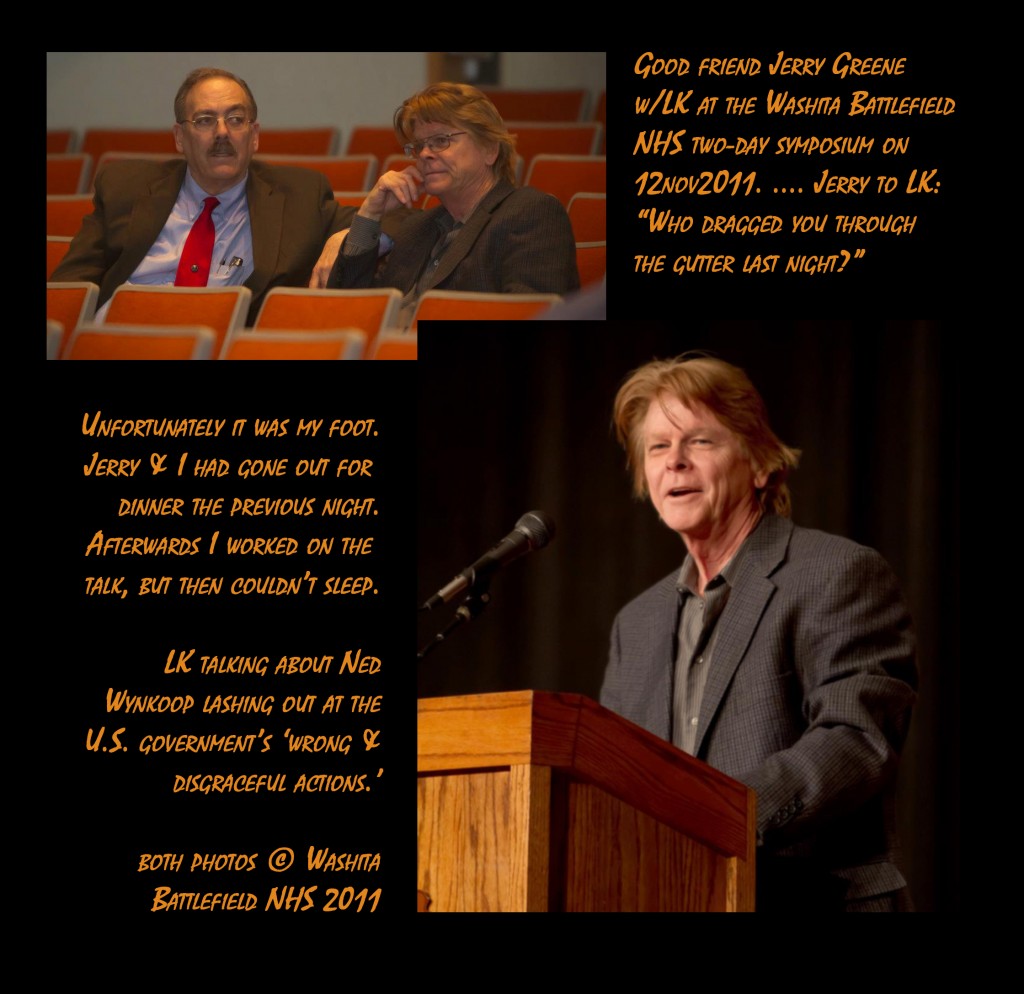
The Wynkoop talk focused on his relationship with the Cheyennes. For the first time I used descriptive words in a talk to describe how the Cheyenne and Arapaho women, children, and men were sexually hacked to pieces at Sand Creek. I had previously used descriptive words in Ned Wynkoop and the Lonely Road from Sand Creek (University of Oklahoma Press, 2011). When talks have value and I like the subject matter they change and grow as they see life in my future. This was one of those talks.
Those of you that know my writing, know that I live with my projects for what might seem like forever and that over the years the people and projects I write about grow and expand as time passes. I prefer to know a lot about a little (by that I mean a lot about only a few people and the events in their lives) as opposed to a little about a lot. My delivery to the NPS included:
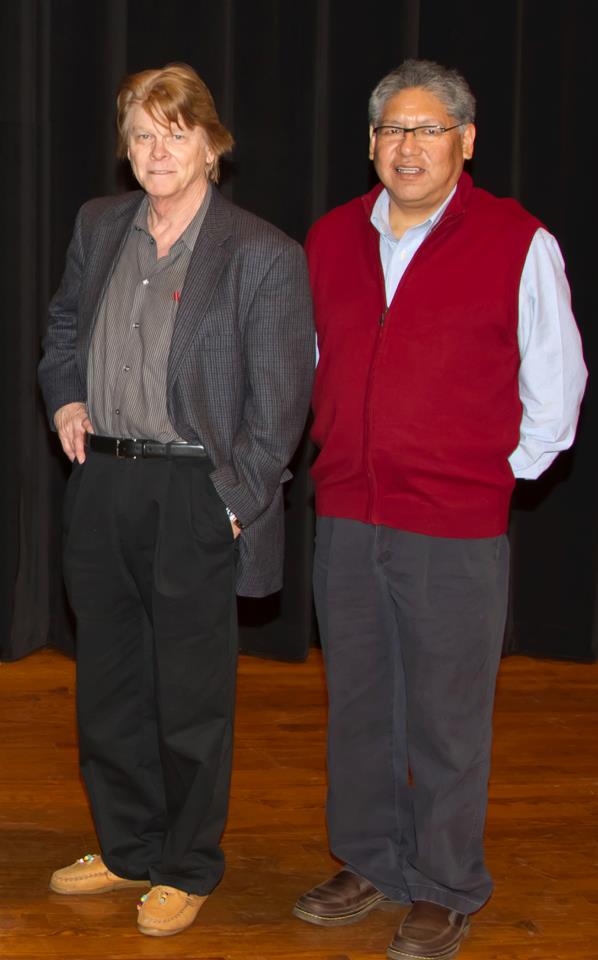
LK w/Principle Cheyenne Chief Gordon Yellowman (he is one of four principle chiefs). We met in 1999, when he and I spoke at a convention at Fort Larned NHS, and he and Cheyenne Chief Lawrence Hart blessed the Cheyenne-Lakota village site on the Pawnee Fork west of the fort. Since then we have talked at least twice at other events. This photo was taken at the end of a Washita Battlefield NHS two-day symposium on 12dec2011. Gordon, like Dr. Mann, has an impressive resume, which includes teaching art as an adjunct professor at the Cheyenne and Arapaho Tribal College, and as the language director for the Cheyenne and Arapaho Tribes’ Department of Education. It is always good times when I am in the presence of this gentleman. I have a poster based upon artwork he created prior to our meeting in 1999 that represents the Sand Creek village before and after that fatal 29nov1864 attack upon people that thought that they were at peace. I framed his art and I treasure it. I hope to use it on the cover and inside the Sand Creek book. This will depend upon Chief Yellowman, OU Press editor-in-chief Chuck Rankin and his art director. (photo © Washita Battlefield NPS 2011)
- Kraft qualifications: This was probably overkill, but I have been writing articles, talks, plays, and books about Ned Wynkoop and the Cheyenne Indians (and that includes when they weren’t in the same article, talk, or book) since the mid-1980s. Reason: I figured that those working on the Wynkoop brochure had no idea who I am.
- Reading suggestions:
Totally distraught at the less than pristine research, I suggested a number of places to learn about Wynkoop and his relationship with the Cheyennes and Arapahos.
- Review of the two-page Wynkoop brochure:
I’m certain that teeth clamped tightly (and perhaps tore flesh inside their mouths) and curses directed at me flowed loudly in a blue-tainted color when my documented words were read.
- A suggested brochure rewrite:
At first I began offering rewriting suggestions in the various sections. It didn’t take me long to realize that these suggestions would be ignored, not read, or discarded (probably all). I rewrote the entire two-page draft and submitted it with the review (probably a major mistake).
- Suggested brochure images:
I also had a big problem with the images in the brochure draft sent me. Again, the NPS is selling Ned Wynkoop in two pages, but the park service drifts so far away from Wynkoop in most of their images that I almost fell asleep when looking at them. I placed my suggestions in the brochure rewrite section, and the images include the reasons why I suggested them over the images in the draft I reviewed.
Unfortunately my optimism blinded me from governmental reality (which I don’t know much about, but what little I do know dips alarmingly close to the dark side).
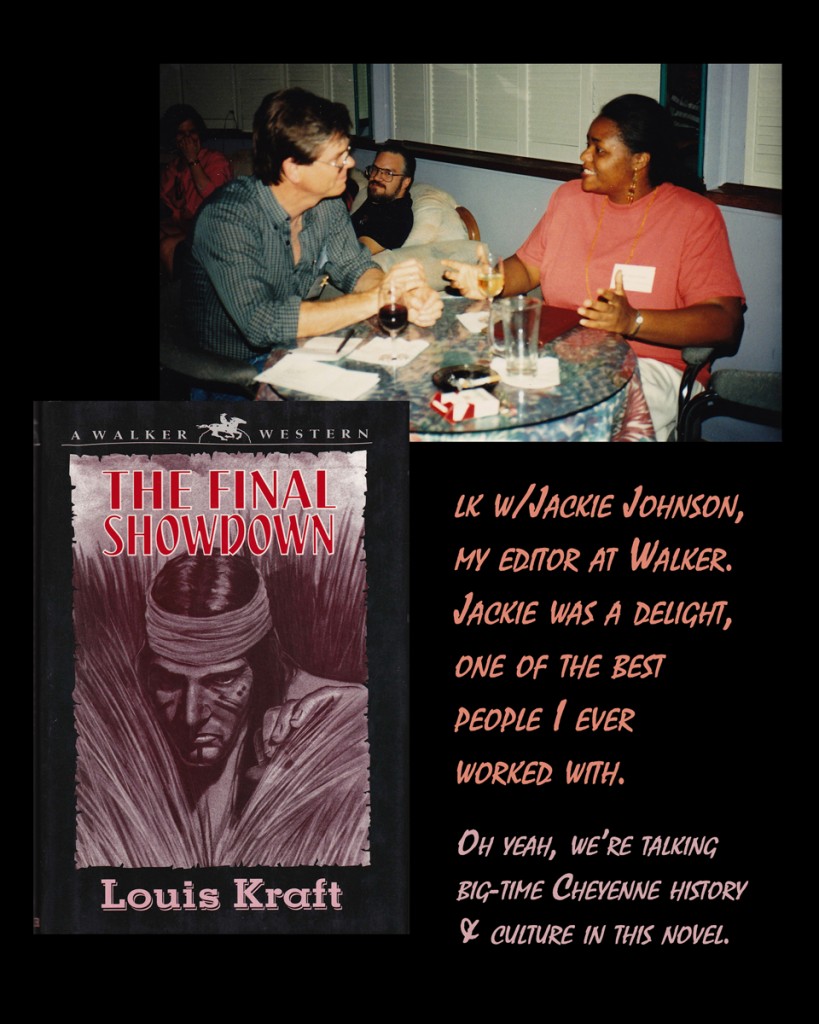
Most of the characters in the novel lived, including Ned Wynkoop, Black Kettle, Stone Forehead, Bull Bear, and on and on. At this point in time (1992) it looked as if I would be a novelist (even though I had nonfiction articles published since the mid-1980s and I had been talking about my subjects at events in the western U.S.A. since the end of the 1980s. My next contracted novel dealt with Kit Carson and the Navajos. But—damn do I hate that word “but”—but the publisher decided to drop their “Western” line. I had an agent and she almost had a heart attack when I stated that I’d sue. She talked me out of it by insisting that I would be blacklisted (I know all about the blacklisting in the film industry). She was probably right, but I know that her main concern was her literary agency. Still I bought into what she said, but we soon parted company. Believe it or not, this opened the door for me to work out a deal with Dick Upton (Upton and Sons, Publishers) and begin writing nonfiction books. Bottom line: LK was one lucky frontiersman.
Those in power had plenty of time to read and digest the Wynkoop brochure review I submitted.
That’s it. End of story. As I said above I heard nothing. I still haven’t heard anything, and at this late date (and approaching September 2014) I don’t expect to hear anything …
… until I make an appearance on a National Historic Site and am recognized. If the review didn’t end my relationship with the NPS, this blog will. I’m certain that I’ll be escorted off the property by armed guards and told never to return (John Monnett, do you realize what’s in your future?).
In June a friend who was aware of my Wynkoop brochure review, and who offered suggestions, asked what had happened to the review. Heck, folks, The X-Files still lives (BTW, it, and Michael Parks’ Then Came Bronson, are the only TV shows I have ever liked), for I am certain that the review I submitted was shredded or locked in a vault.
Regardless what people think of me and my writing, and there are people that have actually turned their back to me at conventions and symposiums after I have spoken about Ned Wynkoop and/or the Cheyennes. I guess they consider Wynkoop a traitor to his race and hell, man, the Cheyennes are Indians. You know, the villains of the American story of conquest. I must be a cretin—an un-American—that refuses to go away and die. Regardless of this anger by me directed at a backlash propagated by people that walk through life wearing blinders, my plays, articles, talks, and books that deal with Wynkoop and/or the Cheyennes speak for themselves.
There are two sides to every story
- A fellow and gal fall in love, marry, and later divorce.
- Two westerners packing revolvers draw on each other.
- An army invades a foreign land and the people that call this land home fight back.
Another story
A few years back I appeared as the lone guest on one of the many LA talk radio shows. This station actually has two shows airing concurrently. I arrived early and while chatting with the radio host that would interview me I met the other radio host (a talkative fellow). After the hour interview ended (the interview focused on Errol Flynn and Olivia de Havilland) the host who interviewed me asked if I’d join him to eat a late dinner at a restaurant (it was now 10:00 PM). I agreed.
Before we got out the door the other radio host caught up to us and asked if he could join us. At the restaurant the radio host sat across from me while the other host sat next to him. The other host (vagueness is important here) never shut up while we ate. The host that interviewed me remained mostly quiet. This meant that I had to respond to an ongoing diatribe against the Germans during WWII. How the hell did this subject come up?
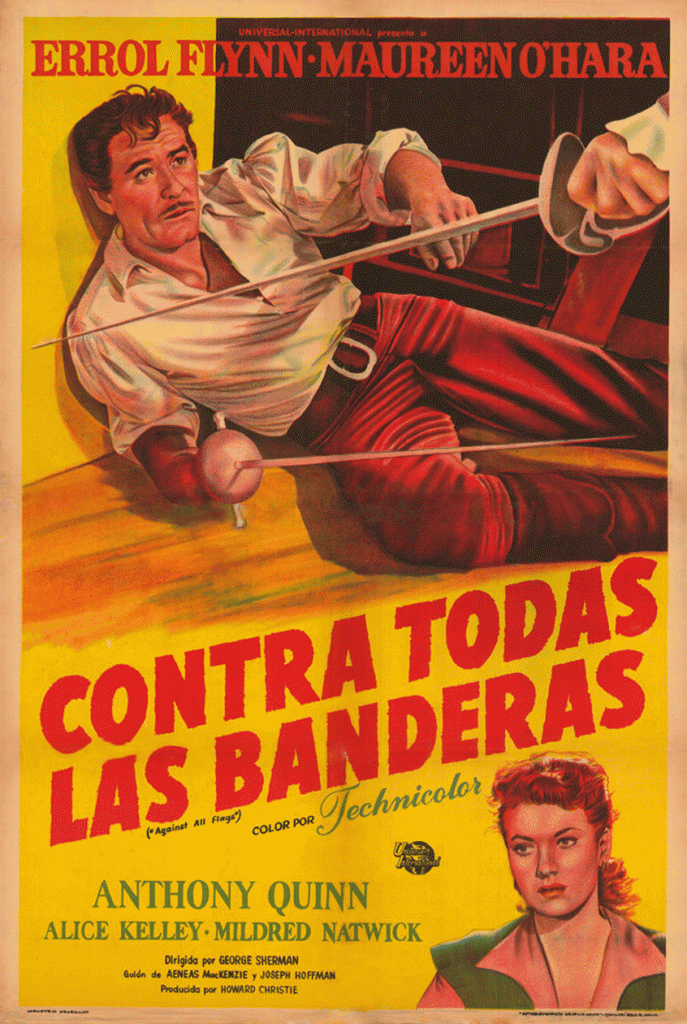
Against All Flags (Universal, 1952). The publicity for the film looked great, especially the American posters, but alas, the film didn’t. This is an Argentina one sheet.
Of course it moved to the genocide of the Jewish people (this genocide happened and it was heinous, but I didn’t want to talk about it). Was this fellow trying to bait me (you know, the false allegations against Errol Flynn). I’ll never know for I didn’t bite. Without warning the other host moved to the actress Maureen O’Hara. I’m not a fan of her films; actually I’ve never seen one of them that I liked (realize that there are many that I haven’t seen). I will say this, the pirate film she did with Flynn (Against All Flags, 1952) is the only swashbuckler of the nine he made that I have nothing positive to say. That said, I read her autobiography, which is a whitewash of her life and a waste of time. Why do people write this clichéd crap that means nothing, and if they didn’t write it why do they allow their name to appear below the title?
That said, I know a fair amount about Ms. O’Hara as I have done a fair amount of study of John Wayne and John Ford and she pops up often.
Whew!!! This SOB other host tore into Ms. O’Hara as a heinous Nazi supporter.

This image of my daughter Marissa and I was taken on 25jun2011 after a Custer Battlefield Historical and Museum Association symposium in Hardin, Mont., where I talked about Errol Flynn’s Custer and the real Custer (not my best talk on the subject). After the event ended Marissa and I traveled to the LBH Battlefield National Monument with good friends Bob Williams and Linda Andreu Wald. Rain had pounded Montana before our arrival and the Yellowstone River had overflowed. But everything was green. A great time with Marissa, who has traveled extensively with me and knows my view on racism. This image was out of focus and has never had enough bytes for me to fix it, …. thus this line art quick fix (which is still lacking). That’s life; so be it.
Let me tell you racism has played a big part in most of my life. Give me five minutes with a person and I can tell you without batting an eye if they’re a racist or not. What he said about Maureen O’Hara I had never read or heard.

On September 22, 2012, I spoke about Wynkoop’s efforts to prevent Maj. Gen. Winfield S. Hancock from destroying the Cheyenne-Dog Man-Lakota village on the Pawnee Fork, about 35 miles (40 by auto) west of the Fort Larned NHS. Leo Oliva, who spoke on the village site with me on that day, had asked me to represent Wynkoop when he was inducted into the Santa Fe Trail Association Hall of Fame. The induction of Wynkoop and others took place during a huge dinner on the 21st. My friend George Elmore, chief ranger at Fort Larned, loaned me the buckskin coat for the three-day rendezvous jointly hosted by the Santa Fe Trail Association, Fort Larned NHS, and the Santa Fe Trail Center. He also took this image of me leaning against Wynkoop’s home and Indian agency at Fort Larned on the 22nd. My film was black & white and I colorized the image. (photo © Louis Kraft 2012 & 2014)
I smiled. The other host continued, eventually asking me to comment.
“I know a fair amount about this lady and I have never seen anything close to what you say.”
He refused to shut up, even though my eyes relaxed into my coolest Clint Eastwood glare. … The other host rattled onward.
My smile grew.
“What’s your problem?” he almost screamed.
Violence is violence and it should never happen. I have learned a lot over the years. One is of major importance: If you are going to be in a fight, you have two choices—win or run like hell. This man was a blowhard; actually a bully with words. This man was short and it didn’t look like he exercised. I said nothing. He stood and repeated the question.
I turned on my charm. “You. You’re a racist.”
“I’m not a racist!” My smile grew bigger yet. It unnerved him and he sat down. … After we paid the bill at the table he leaped up but kept his distance from me as he ran for the exit.
I was never invited back to this radio station, even though the host claimed over and over again that he would do a follow-up interview when Ned Wynkoop and the Lonely Road from Sand Creek was published. No comment.
A July 25 email and the response
One of my best friends for many-many years is someone I met in the technical world in 1990. We’ve done a lot together and there is a bond between us that is special. He is quarter Cheyenne, although that has had nothing to do with our relationship. I trust him and often he offers me more than support and friendship for he gives me opinion, review, and advice. Alas, a couple of years back he left SoCal to return to his homeland.
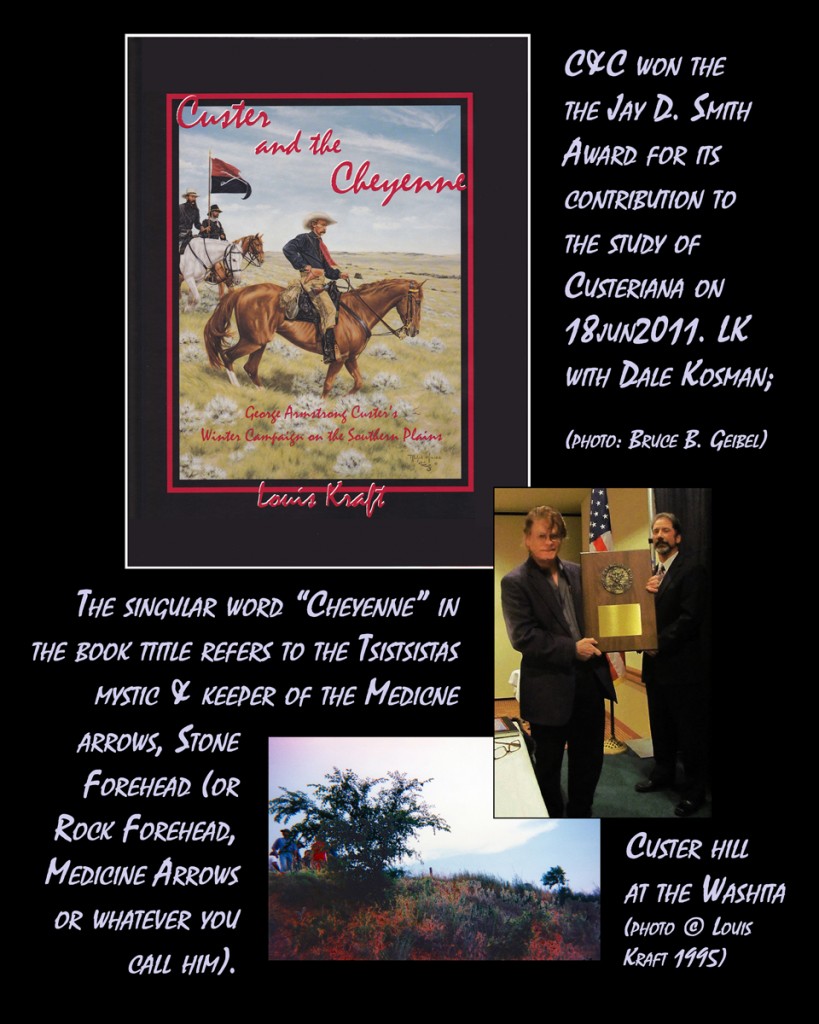
Although not stated in the collage, Stone Forehead plays a leading role in Custer and the Cheyenne (Upton and Sons, Publishers, 1995). As noted above, he played a role in The Final Showdown. He had a smaller role in the Wynkoop book, but he will have as large a role as possible in Sand Creek and the Tragic End of a Lifeway (contracted with OU Press).
On July 25, 2014, I sent a long email to a business associate who has become my friend over the years.
One of the paragraphs read: “In the spring I reviewed a proposed two-page brochure on Wynkoop for the National Park Service. The two pages were a joke. Often a sentence contained one or more errors and I don’t think any of the paragraphs were error free. It took three weeks to submit a 30-page document that pointed out the errors with citations that backed up the commentary along with documented facts and suggested rewrites. The response: Zero. Not even a ‘we received it.’ Recently a friend asked what happened, and I told him nothing. ‘Hell, if they trashed what you sent, some of what you submitted would make good copy for one or more blogs.’ (He was privy to what I submitted.) Good idea, and I’m considering it.”
The friend’s response: “Yes, why not post your neglected response to the NPS?“
What to do?
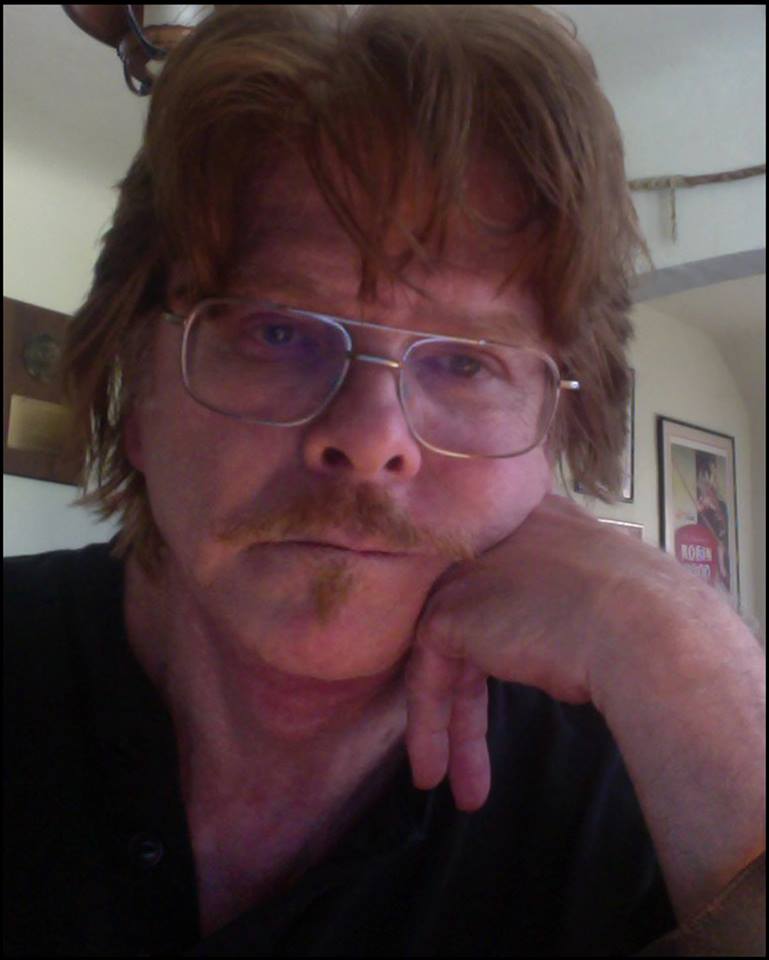 Ahhh, for there’s the rub. Obviously this blog will make me public enemy No. 1 to the NPS. Just like the racist radio host, I’ve gotten to that age in life where I’m not going to be a good boy and “Yes sir” people to death with views to which I don’t agree. The reason: I don’t care what they think of me, I don’t care if they hire me again, but more important I need to be true to me.
Ahhh, for there’s the rub. Obviously this blog will make me public enemy No. 1 to the NPS. Just like the racist radio host, I’ve gotten to that age in life where I’m not going to be a good boy and “Yes sir” people to death with views to which I don’t agree. The reason: I don’t care what they think of me, I don’t care if they hire me again, but more important I need to be true to me.
LK the thinker (left). Yeah, I hate to say it, but this is the real me and it is totally focused on my writing projects. I don’t want to say 24/7 but it’s close.
“What to do?’ … yeah I sometimes vacillate
What I can’t or won’t do: Give you my background, post the NPS two-page Wynkoop brochure, and I’m not going to give you the cited documentation to my critique. That leaves me two choices: Drag my rewrite of the two-page brochure into this blog or mimic their draft with my words and image suggestions in place. The second idea is easily doable but it will cost me many hours to duplicate the NPS design. Why waste my time for an organization—the NPS—that doesn’t give a bleep in the first place? I will provide my rewrite of the NPS draft along with a discussion of some the NPS statements, omissions, and errors that bothered me. I’m going to include my image suggestions to the NPS document in the section of the blog that contains my suggested rewrite to the NPS embarrassment.
NPS Wynkoop brochure errors & omissions
Errors are errors and the blatant ones directly related to Wynkoop shouldn’t be repeated ad nauseam in print. They should be pointed out. Also, the NPS also lost focus of their topic and because of this (or perhaps because the writers had no clue what Wynkoop did and/or way-too often omitted what Wynkoop did). Some of these omissions are as large and glaring as the errors. Fear not, for I have no intention of pointing out the NPS’s poor English or spelling errors in this blog (at least I hope not). The brochure headings are listed as in the original NPS Wynkoop brochure draft supplied me.
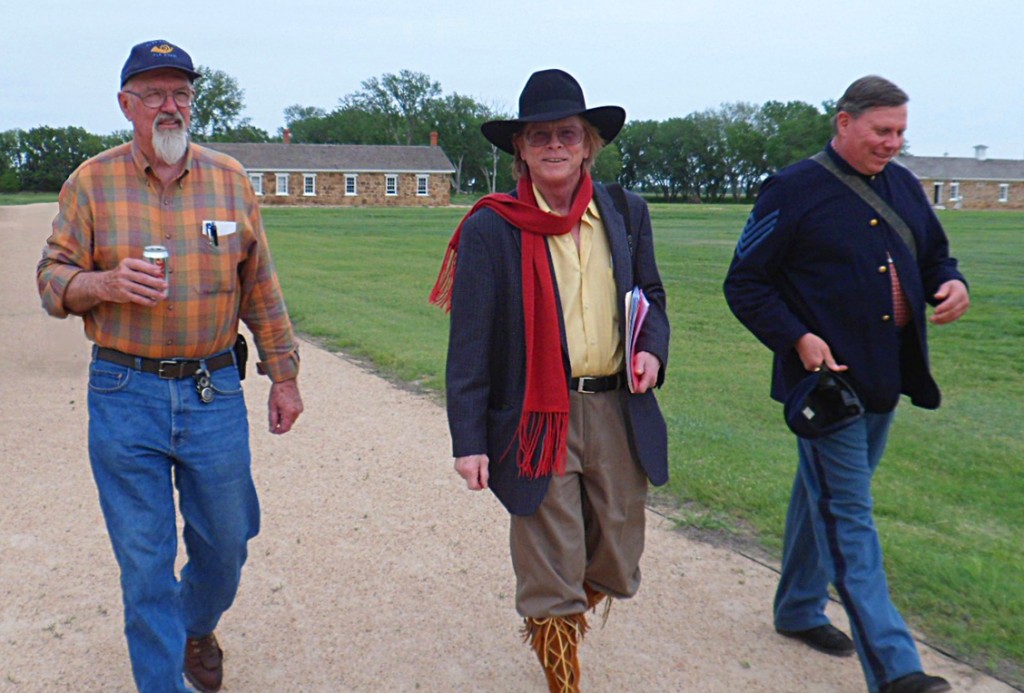
LK with Leo Oliva (left) and George Elmore at Fort Larned NHS in April 2012. These two fellows over many years have been responsible for bringing me back to Kansas time and again. A good relationship that has led to friendship.
Early Years (1836-1861)
LK note: I had a lot of problems with this section, but most of them dealt with writing and focus.
- I asked that the statement that Wynkoop was good with a Bowie knife be removed. Reason: There is only one quote that I have seen that stated he carried a Bowie knife. This does not mean that he was “good” with this weapon. There are images of Wynkoop with firearms but none with a Bowie knife. There is documentation that backs the premise that Wynkoop was “good” firing guns, but other than that one sentence that says he carried a Bowie knife, there is nothing.
ERROR: Wynkoop didn’t move to the “small mining settlement of Denver” for the simple reason that it didn’t exist yet.
He had no duties to perform as sheriff as there was no town or city, no laws, and no jail. Wynkoop’s title of “sheriff” meant nothing; it consisted of words on a piece of paper that the men in the area refused to accept. Of interest: Wynkoop might have named the proposed city that would someday occupy the land that he and other members of the Denver City Town Company, including William Larimer, claim-jumped from the St. Charles Town Company in November 1858: “Denver.”
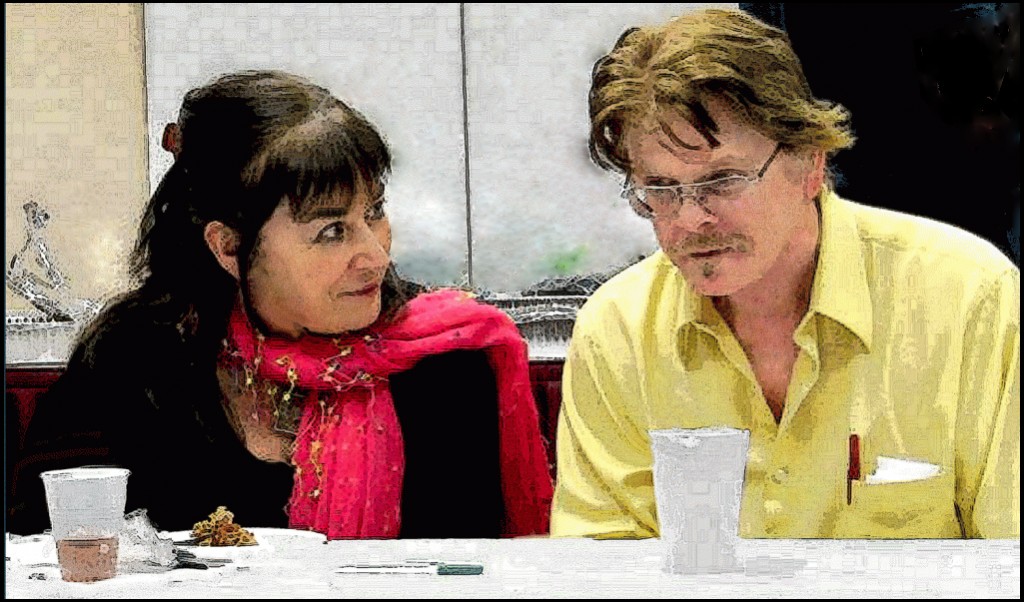
I met Deb Goodrich Bisel in 2008 when she invited me to give a couple of Wynkoop-Cheyenne talks in Kansas in May of that year. During the week that I stayed with her and her family, which also included her interviewing me on her radio show in Topeka, we became friends. Good friends. Whenever I see this talented person it is just like the last time was the previous week. She is a bright, funny, and caring writer-historian. This image was taken by Frank Bodden at the Centennial, Co., Order of the Indian Wars symposium hotel on the evening after I talked about Wynkoop lashing in to the U.S. government for what he considered the murder of innocent people in April 2013 (sorry Frank, but I didn’t have enough bytes and played around with the image). I call this my snow trip as I spent eleven days in Colorado and on at least six or seven of them I was snowbound and grounded.
ERROR: Wynkoop didn’t perform any “duties” as sheriff until after he returned to Denver City in late1859.
At that time the budding Denver City still had no jail, he reported to no one, and actually his position dealt with criminal events that happened outside the city limits. No real law existed in Denver or the surroundings and most of the rough and tumble crowd that then occupied the area ignored Wynkoop’s assignment as “sheriff,” which only paid upon arrest and conviction by a “people’s” court (that’s right, no judicial system existed in 1859-1860). This meant that Wynkoop went hungry more often than he feasted. It also meant that he had a lot of free time to figure out other ways to earn money.
Wynkoop did sell some property (mostly within Denver City limits) that he owned as he had been one of the founding members of the Denver City Town Company. He earned extra and much-needed money tending bar in Charlie Harrison’s Criterion Saloon in Denver beginning in1860.
ERROR: Wynkoop never earned money as an actor.
Almost all (if not all) professional actors arrived in Denver as members of acting troupes. Usually there might only be one, two, or three professional actors performing in a play. The rest of the actors that performed on the Denver stage at this time were “amateurs” and they acted without pay. Beginning in late 1859 and extending through 1860 and into pre-Civil War 1861 most of the acting was performed in drinking and gambling houses. During the winter months often many of the men had nothing to do as harsh weather prevented mining. Wynkoop went on the stage simply as he wanted to meet and woo Louise Matilda Brown Wakely.
LK comment: I think you should totally drop all references to Wynkoop’s acting career to create additional room for Wynkoop’s relationship and interactions with the Cheyennes.

ERROR: Major misspelling of Wynkoop’s future wife’s first name plus an erroneous middle initial.
Currently her name is listed as LOUIS B. WAKELY. “Louis” is a man’s name; her name was “Louise” with an “e.” Also, using a “B” as her middle initial is WRONG. If you want to use a middle initial, use “M” for “Matilda” as that was her middle name. “B” stands for “Brown,” which was the name of her mother’s first husband and her father.
LK suggestion: List Louise as “Louise Wakely” (my preference) or as “Louise M. Wakely.” BTW, “Wakely,” the name that Louise used at the time she met Wynkoop was her stepfather’s last name.
ERROR: Louise Wynkoop was not a singer and didn’t sing on stage. This comment should be deleted.
LK comment: I have seen nothing that states that Louise sang on the stage. However, since one of her sisters sang on the stage (yes, there were three sisters) and she constantly was recognized as a singer while there were no mentions of Louise singing, this seems like a no-brainer. Check the index in Ned Wynkoop and the Lonely Road from Sand Creek (OU Press, 2011) for Flora Wakely, Louise’s youngest sister, or do your own research.
Civil War Years (1861-1865)
Although this section is listed as “Civil War Years (1861-1865)” it is totally mislabeled for Wynkoop’s involvement with the Civil War basically ended in fall 1862 when he returned to Colorado Territory, and perhaps you can extend it to 1863 (as the Colorado military continued to watch for another invasion). When this section moves to 1864 (and even though the Civil War was still in progress, the focus has moved to the Cheyennes and Arapahos. More importantly it has moved to the lead-up to the tragic attack on the Sand Creek village in November 1864. As currently labeled the Sand Creek section should be part of this section and as currently listed the “Sand Creek” heading should be removed and the text from that section should be moved into this section.
I totally disagree with what I said above. The Sand Creek section (as you originally created it) needs to remain standalone. That said, portions of this section should move into the Sand Creek section and this section should be re-dated.
Charge this section to: “Civil War Years (1861-1862)” or perhaps “(1861-1863),” for this can be justified as Wynkoop remained on the alert for a second Confederate invasion (but I don’t think this should be discussed as it would take up precious space in your document).
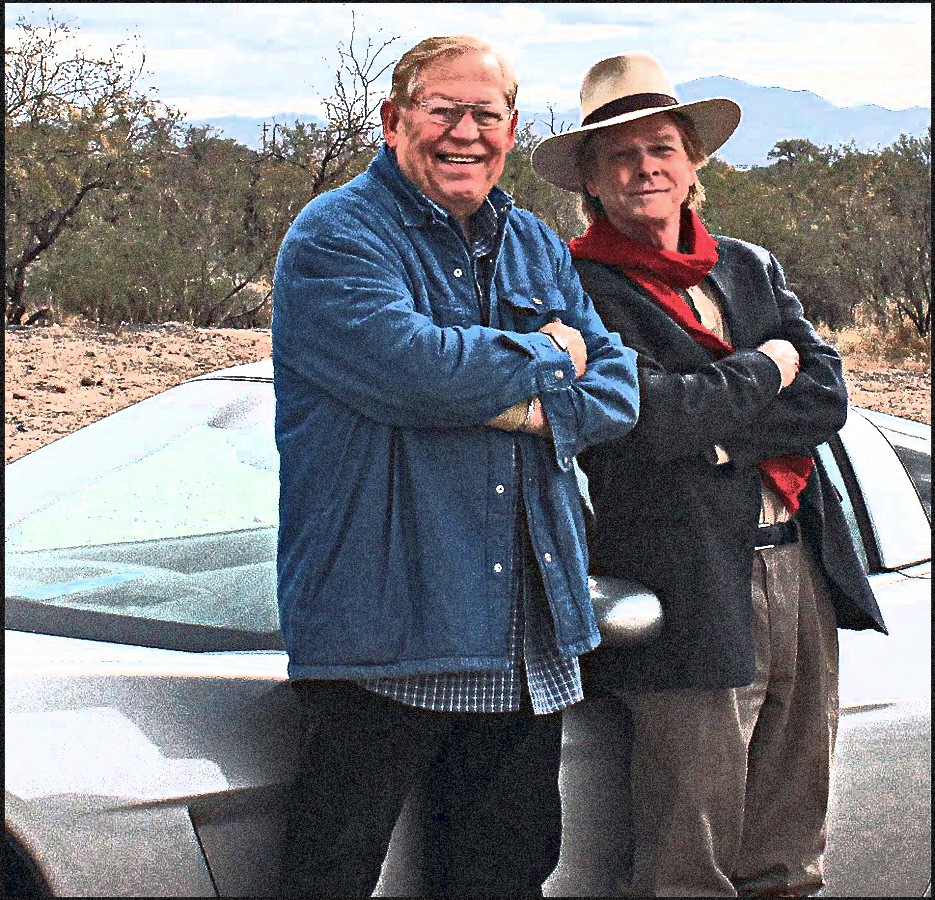
Glen Williams & LK at Mission San Xavier del Bac on 15jan2012, which is west of Tucson, Ariz. I needed this trip with my good friend (really a brother whom I met shortly after my brother died in 1990). Our relationship grew slowly but over the years he has become a great friend who is an adventurer with a great interest in the world we live in and in our Indian wars past. If you have paid close attention to some my experiences in the blogs you are aware that at times I am capable of getting myself into trouble. Glen is a calming influence as we explore the present and our American heritage. (art © Louis Kraft 2014)
We will obviously miss Wynkoop’s 1863 Ute Indian campaign (thus a gap in your heading dates, unless you use the second dating, which is my choice in the previous paragraph). You have two pages (front and back of one piece of paper) to state what is important and the focus must remain true to what you want to sell: Wynkoop’s relationship with Cheyennes (and to a lesser degree his relationship with Arapahos). This has got to be the focus, and I don’t think you should deviate from it.
The above is editorial opinion, and I sincerely hope you are
not offended by it but agree with it.
ERROR: Wynkoop became a 2nd lieutenant on July 31, 1861, and not in August.
ERROR: “The Coloradans joined New Mexico’s Union forces and defeated the Confederates at the Battle of Glorieta Pass…” No. There were no New Mexican forces at this battle. However, there were troops from the 1st and 3rd U.S. Cavalries present.
ERROR: As currently written, the regiment returned to Colorado and then Chivington and Wynkoop were promoted and the regiment became a cavalry regiment. NO! The Glorieta victory didn’t stop the Confederate threat and the invasion hadn’t ended. This didn’t happen until the Battle of Peralta near Los Lunas, New Mexico Territory, in April 1862. Also, that April, and while still in New Mexico Territory Chivington became colonel of the regiment, which then had a “name change” and not a reorganization (that came probably in November). The 1st Regiment of Colorado Infantry became the 1st Regiment of Colorado Cavalry (I’ve also seen 1st Colorado Cavalry Volunteer Regiment), perhaps as early as April but certainly by November 1862 (as you state). Wynkoop received his promotion to major on April 14, 1862. The next day, April 15, the Battle of Peralta ended the Confederate invasion as the Rebels now hustled to get out of New Mexico Territory. There were New Mexican Union soldiers at this battle.
LK comment: I have seen many names for the newly named 1st Colorado Cavalry, and I’m probably good with whichever name you decide upon.
LK comment: Move the third and fourth paragraphs to the “Sand Creek Massacre (1864-1865) section.
Sand Creek Massacre

I like this image of my daughter Marissa. It hangs on a wall at Tujunga House. Using it here is mainly a reminder to me that I have a lot of research images on 35mm slides but no projector and need to get the slides digitized. We had been tracking Custer when Jerry Russell’s Order of the Indian Wars 1987 tour would end at the supposed Sand Creek Massacre site on private property. I called Jerry and asked if we could join the trip to Sand Creek and following banquet. He graciously said yes. This actually turned into an article on modern-day historians for True West (1990). While the tour assembled on the bluffs, Marissa and I explored the land below. (photo © Louis & Marissa Kraft 1987)
LK comment: This section has no dates. I suggest adding “(1864-1865)” to the title of the section to retain consistency with the rest of the document: “Sand Creek Massacre (1864-1865).”
LK comment: I moved paragraphs three and four from the Civil War section to this section and these paragraphs are now paragraphs one and two in this section (see the suggested LK draft, below). BTW, I had problems with both paragraphs and commented upon the NPS text within the paragraphs (this you won’t see in the blog).
LK question: Was Left Hand’s band part of Little Raven’s band? If not, I believe that you should feature Left Hand as he and a small number of Arapahos were at Sand Creek and Little Raven wasn’t at the time of the November 29 attack.
LK request: I’ve recently heard (without seeing documentation) that Left Hand is being removed from the Sand Creek Massacre NHS. If so, why? If Left Hand wasn’t at Sand Creek and didn’t receive wounds that ended his life there I would like to see proof. This is a major request from me for if true it needs to be in the Sand Creek and the Tragic End of a Lifeway manuscript that I’m currently writing.
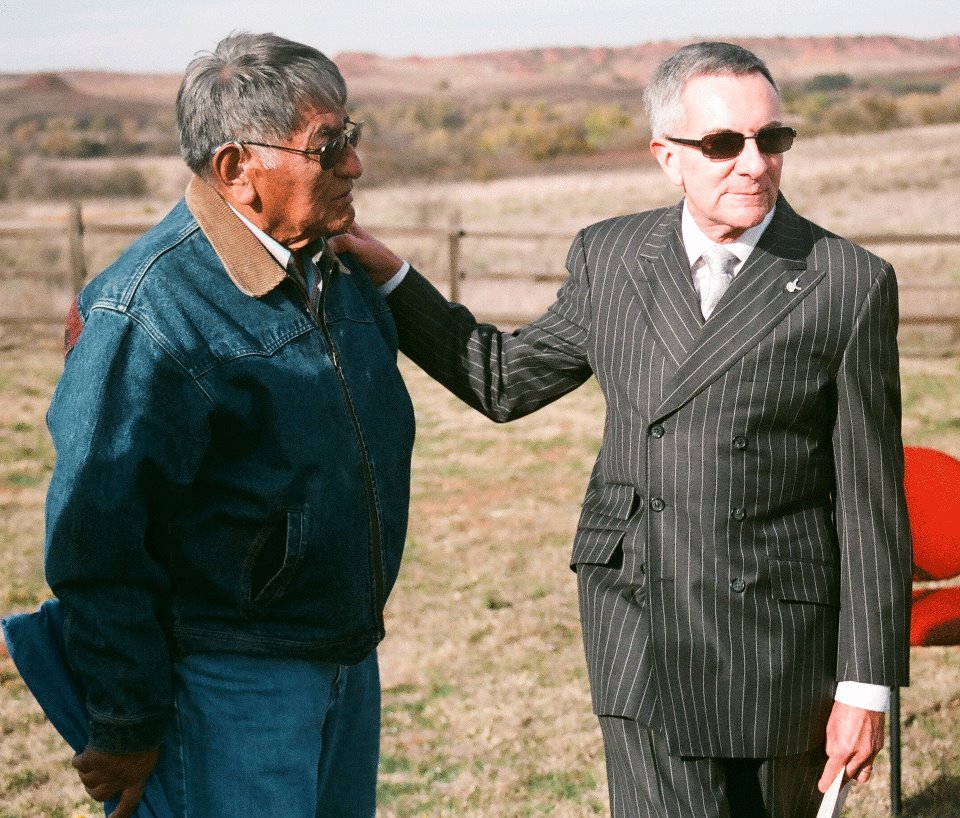
After the speakers and music completed at the Washita Battlefield NHS overlook on 11nov2011 I captured this image of Moses Starr of the Red Moon Signers & Drum Group (left) and W. Richard (Rick) West. I met Rick for the first time before the event began and then spent a lot of time with him on the 12th, when we lunched together. We had plenty of time to talk. Rick is a Cheyenne peace chief. He is also the founding director and director emeritus of the National Museum of the American Indian at the Smithsonian in Washington D.C. Recently he became president and CEO of the Autry National Center in Los Angeles, Calif. (I believe in December 2012). (photo © Louis Kraft 2011)
LK comment: You have repeated Black Kettle’s quote, “This white man is not here to laugh at us…but, on the contrary, unlike the rest of his race, he comes with a confidence in the pledges given by the red man,” which is in the subtitle of the brochure, and quoting it a second time is redundant. To save space I suggest cutting it here.
BTW, the George Bent quote in the subtitle is not redundant at the end of the document as he sums up what Wynkoop meant to the Cheyennes and Arapahos.
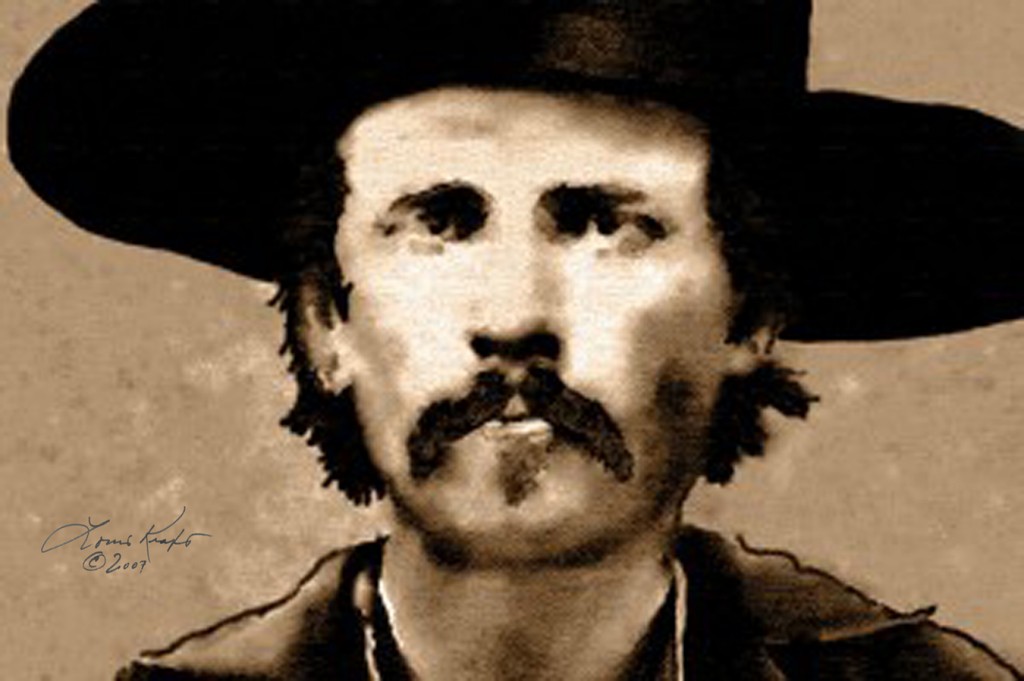
As you know I take photos and create art. The reason is twofold: 1) Often there are not enough historical images to tell a story (and publishers rightly don’t like to keep printing the same images over and over again), and 2) They can bring in much-needed money. I created this portrait of Wynkoop in 2007. Since then it has appeared in two anthologies and two magazines. (art © Louis Kraft 2007)
ERROR: You called John Evans a “new” territorial governor, which implies that he was a novice and didn’t know what his duties were. By late summer/early fall 1864, Evans, who was the second territorial governor of Colorado Territory, had served as governor longer than William Gilpin had during his entire tenure as the first territorial governor.
ERROR: You state that the Cheyennes and Arapahos that moved to the Big Sandy and were involved in the Sand Creek Massacre made the move in mid-October 1864.
The Cheyennes and Arapahos that were attacked at Sand Creek on November 29, 1864, didn’t make the move until after Anthony replaced Wynkoop as commander of Fort Lyon in November (at least Black Kettle, Little Raven, and Left Hand didn’t; for Left Hand and Little Raven met with Anthony and Wynkoop in November, and later Left Hand and Black Kettle met with Anthony and Wynkoop. Anthony reached Fort Lyon on November 2 but didn’t inform Wynkoop that he was replacing him as commander until November 5 (see below for the reason why Anthony replaced Wynkoop). After being replaced by Anthony, Wynkoop and Anthony met with Little Raven and Left Hand (their village, which was about a mile from the post consisted of 113 lodges and 652 people.). At this meeting, Left Hand said that he “was willing to submit to anything; that the whites might place him in irons, or kill him, but that he would not fight them.” A short while later, Anthony, Wynkoop, Capt. Silas Soule, Lt. Joseph Cramer, and Lt. William Minton (Minton was a member of the First New Mexico Volunteers) met with Black Kettle and Left Hand at the commissary on the hill above Fort Lyon (this was the former Bent’s New Fort, which William Bent had sold to the military). It was at this meeting that Anthony told the Indians that if they moved to Sand Creek that they would be under the protection of the military. And, AND they didn’t move away from the post until Anthony insisted that they move away. According to Anthony, Black Kettle and his band reached Sand Creek on about November 17, as he placed it 12 days before Chivington attacked the Sand Creek village on November 29.
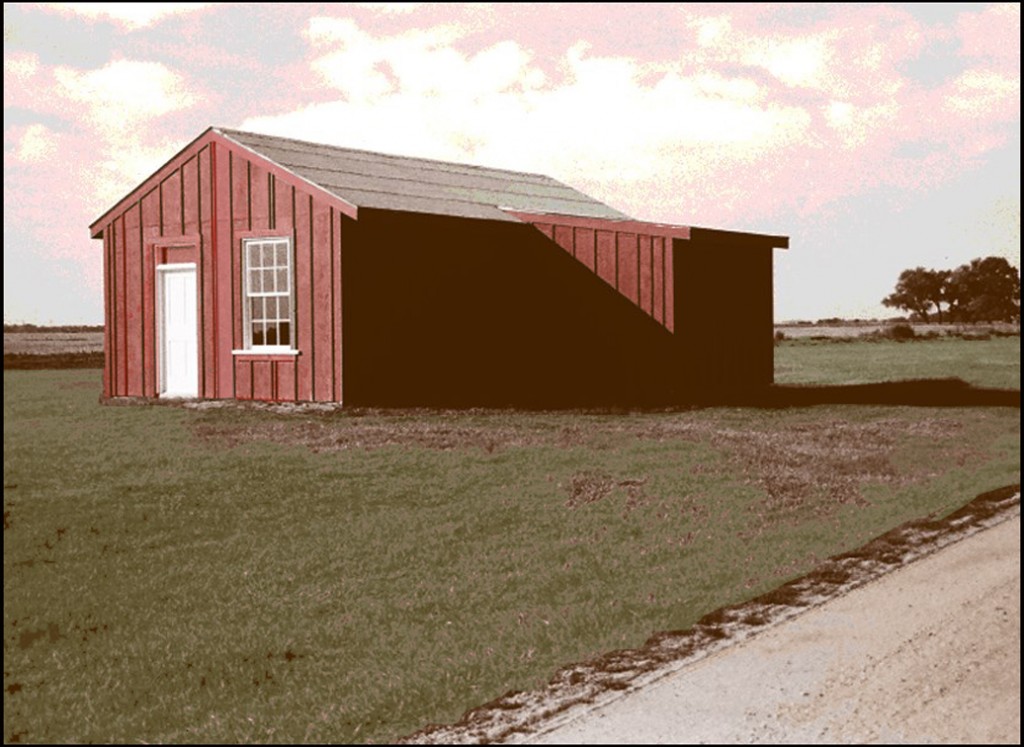
Wynkoop’s home & Indian agency was located just outside the perimeter of Fort Larned, and southwest of officer’s row on the western side of the post and just south of the bend in the Pawnee Fork (this view is from the east/slightly northeast). The southern wall of the Wynkoop agency/residence (photo left, and not seen in this image) had two wooden walls with stones between the walls to protect against ride-by shootings. When Cheyennes (such as Black Kettle, Tall Bull, Stone Forehead, and Roman Nose) visited Wynkoop at the agency they and the people that then traveled with them camped to the south and west of the building. (photo © Louis Kraft 2012)
MISSTATEMENT, and as Stated, an ERROR: Wynkoop set out for Kansas to assume command of Fort Riley (although he would command it for a few days in December 1864).
Wynkoop had been removed from command at Fort Lyon for being absent from his post in time of war and had disobeyed orders, risked his command, and met with warring Indians in September 1864, and it looked as if he would face a court-martial. Anthony informed Wynkoop that his orders were to investigate officers (meaning Wynkoop) that fed hostile Indians in violation of orders. The military wanted to get rid of Wynkoop, and as quickly as possible as it viewed him as little more than an embarrassment. Hell, a war was going on; you don’t try to make peace and end it and that is exactly what Wynkoop attempted to do.
ERROR: You state that Col. John Chivington and his combined First and Third Volunteer Cavalries departed Fort Lyon on November 29. Actually Chivington’s command left Fort Lyon on the evening of November 28 at 8:00 PM.
MAJOR ERROR: Wynkoop didn’t visit the Sand Creek village site before he wrote his January 15, 1864, Sand Creek report on the massacre. Although he might have traveled to the site before June 1865 when he took Joint Special Committee members Senators James Rood Doolittle, Lafayette S. Foster, Edmund G. Ross, and Gen. A. McDowell McCook to see the bloody ground, this isn’t confirmed. We know that Wynkoop visited the site with Doolittle in June 1865. FYI: They saw the skeletal heads of small children with bullet holes through the top of their sculls showing how they might have died.

Leo Oliva speaking about the events that led up to the April 1867 destruction of the Cheyenne-Dog Man-Lakota village on the Pawnee Fork by Maj. Gen. Winfield S. Hancock on 22sept2012. This three-day rendezvous co-sponsored by the Fort Larned NHS, Santa Fe Trail Center, and Santa Fe Trail Association was a marvelous affair. It included talks, re-enactors, book signings, and historic personages being inducted into the Santa Fe Trail Association Hall of Fame. Leo gave his talk from the east side of the Cheyenne village site. As you can see, I was to his left and slightly behind him. The crowd also circled to his right, with some behind and above him where the main portion of the village had been located. Leo and I were the only two speakers at the village site on that day. (photo © Louis Kraft 2012)
Timeline for Wynkoop’s Sand Creek report: Wynkoop arrived at Fort Lyon on the evening of January 14, 1865, assumed command the next day, interviewed participants and non-participants of the attack, and on that same January 15th day submitted his Sand Creek report.
LK comment: The investigations into the attack on the Sand Creek village were exploratory for information on the tragic event; they never were investigations that would lead to a trial as Chivington had mustered out of the military before the investigations began, which placed the colonel beyond military court-martial.
Indian Agent (1866-1868)
ERROR: Wynkoop was not an Indian agent at the Little Arkansas River peace council in fall 1865. He commanded the military escort for the peace commissioners.
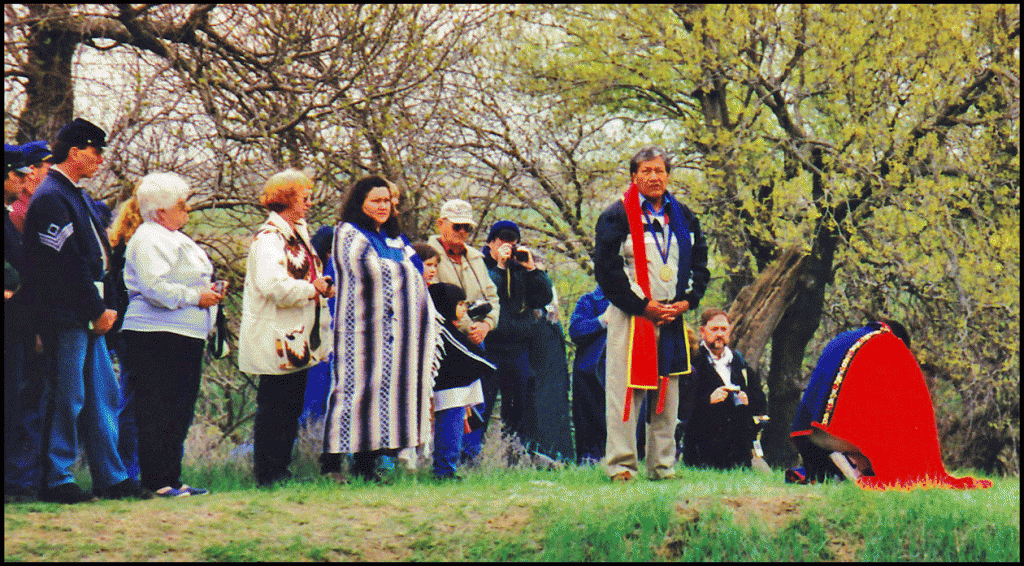
The day is April 24, 1999, and it was a special day, for on this day Cheyenne chiefs Lawrence Hart and Gordon Yellowman blessed the Cheyenne-Lakota village site that Maj. Gen. Winfield S. Hancock destroyed in April 1867. Cheyenne Chief Lawrence Hart stands just right of center with his hands folded. Cheyenne Chief Gordon Yellowman is praying at the right of the image. About four people to the left of Chief Hart (as we look at the image) is Connie Yellowman with the robe wrapped around her, Gordon’s wife. I met her early on the first day of the Fort Larned Old Guard event when both of us went to the office of our lodging to get coffee. She had read Custer and the Cheyenne, knew I’d be present, and brought her copy of the book for me to sign. Ladies and gents, in case you don’t know it I have written extensively about the Southern Cheyennes and have always been true to my view that people are people and that there are always two sides to a story. Connie loved what I had written about the Cheyennes. The sergeant at the far left of the image is George Elmore. At this time he was chief historian at Fort Larned NHS (he is now chief ranger at my favorite destination, which always includes the Pawnee Fork village site). I met George in 1990 or 1991 when I researched the novel The Final Showdown. He gave my daughter Marissa and I a private tour of the fort. I have photos, but unfortunately they are slides and were never printed and now reside in boxes and long unseen—I need to do something about this, and soon, as I have many images dealing with my research that are on slides. (photo © Louis Kraft 1999)
OMISSION: Wynkoop renegotiated the 1865 treaty agreement in spring 1866 with Cheyennes, Dog Men, and Arapahos that had mostly avoided the peace council. Wynkoop was on detached duty from the military at the time. Wynkoop arrived at the Bluff Creek, Kans., camp on February 25. Black Kettle was present, as was Stone Forehead, Keeper of the Sacred Arrows (a coup for Wynkoop). The next morning Dog Men waited for Wynkoop outside his tent, and they weren’t friendly. On February 28 Wynkoop held an initial meeting with Cheyenne and Dog Men leaders. That night he learned that Dog Man Porcupine Bear threatened to kill him if any Cheyennes or Dog Men touched the treaty paper. Nevertheless a nervous Wynkoop held his main council with the Cheyennes and Dog Men on March 1. Bull Bear and Black Kettle helped Wynkoop, who kept calm and got most of the Indians to agree to the changed treaty. However, Dog Men threatened Black Kettle if he touched the updated treaty paper and the chief didn’t make his mark on the paper. And there’s more. Wynkoop spoke with Little Raven’s Arapahos on March 2, and later yet had a second meeting with other Dog Men. Wynkoop also received a young woman whose freedom had been purchased while he was still at the first council site.

This is one of my favorite photos of all time (so much so that it is the header for my website/blog). I took this image on 23apr1999 when Leo & Bonita Oliva and George Elmore took me (and my then girlfriend) on a private tour to the Pawnee Fork village site and then an exploration of the site. Some of the Cheyenne re-enactors had set up their lodges on the Cheyenne portion of the village site. One of them invited us to spend time in his lodge. During our visit with him and other Cheyenne re-enactors he boiled buffalo tongue over the open flame at the center of the tepee. For me this was a very cool experience. (photo © Louis Kraft 1999)
OMISSION: In 1867 you attempt to deal with Maj. Gen. Winfield Scott Hancock’s destruction of the Cheyenne-Dog Man-Lakota village on the Pawnee Fork but you have totally missed Wynkoop’s participation in the events that led up to the destruction of a peaceful village, which started yet another Indian war as Wynkoop warned.
OMISSION: What happened at the meeting at Fort Larned, with Cheyenne leaders including Dog Man Chief Tall Bull? Wynkoop was present and mixed-blood Cheyenne Edmund Guerrier interpreted when Hancock threatened the Indians with war. What about Tall Bull asking Wynkoop to stop Hancock from moving toward the Cheyenne-Dog Man-Lakota village as the Indians feared another Sand Creek? I’m afraid you are missing a major point here.

I had created this montage before I began to piece together this blog. In Ned Wynkoop and the Lonely Road from Sand Creek I used the word “Sioux” to represent the people I was writing about, mainly because the primary source quotes called these people Sioux. Words that represent people have changed as language usage has changed. In the blog I chose to call these people “Lakotas.” I don’t know which word I’ll use in Sand Creek and the Tragic End of a Lifeway. However, I know that the primary source quotes will still say “Sioux.” This is a problem that I’ll think about right up until I deliver my polished manuscript. That said, I should say something else here. I use Cheyenne words in my writing whenever possible, and believe me the spelling of these words has matured and changed quite a bit since the 1980s. That said, this is an ongoing quest for me for I want to know the Tsistsistas’ words, I want to know how to pronounce them. and believe me I use the spoken words in talks and plays. It is a living language, and it must never die. I’m sorry, “Tsistsistas” means “Cheyennes” (a white word); it means “The People.” There is much more to the Tsistsistas’ name, much more. Simply, it represents the Northern and the Southern Cheyennes, and the Dog Men military society (remember, “Dog Soldiers” is a white man word) that for all intensive purposes functioned as a third segment of the tribe by the 1850s. There is much more I can say here. I have said a lot in past books and in some articles, and will say more in the Sand Creek book.
OMISSION: The fear of another Sand Creek attack was already in place long before Hancock reached the village (and as pointed out above, Tall Bull told Wynkoop of this fear after the meeting with Hancock). … You’ve missed another dramatic situation. Why not highlight the Indian battle line that confronted Hancock’s army miles before it reached the Pawnee Fork village? Wynkoop rode between the lines and prevented a battle that day. This is well documented.
ERROR: The Pawnee Fork village was occupied when Hancock’s army set up camp near it. This is well documented.
OMISSION: What about Wynkoop’s massive efforts to save the village from destruction after the Indians fled their village in fear of their lives? You’re writing about Wynkoop and yet you ignore this. Unbelievable.
LK suggestion: Read the chapter on “Hancock’s War” in Kraft, Ned Wynkoop and the Lonely Road from Sand Creek (OU Press, 2011), 178-201, and William Y. Chalfant, Hancock’s War: Conflict on the Southern Plains (Norman, Oklahoma: The Arthur H. Clark Company, 2010) for information on what happened at the Pawnee Fork in April 1867.
LK comment: Obviously I have major problems with the Hancock 1867 expedition to confront the Cheyennes and Wynkoop’s participation in the events. You miss what happened, you miss the dramatics of what happened, and you exclude Wynkoop from the events, even though you are supposedly featuring him in this brochure.
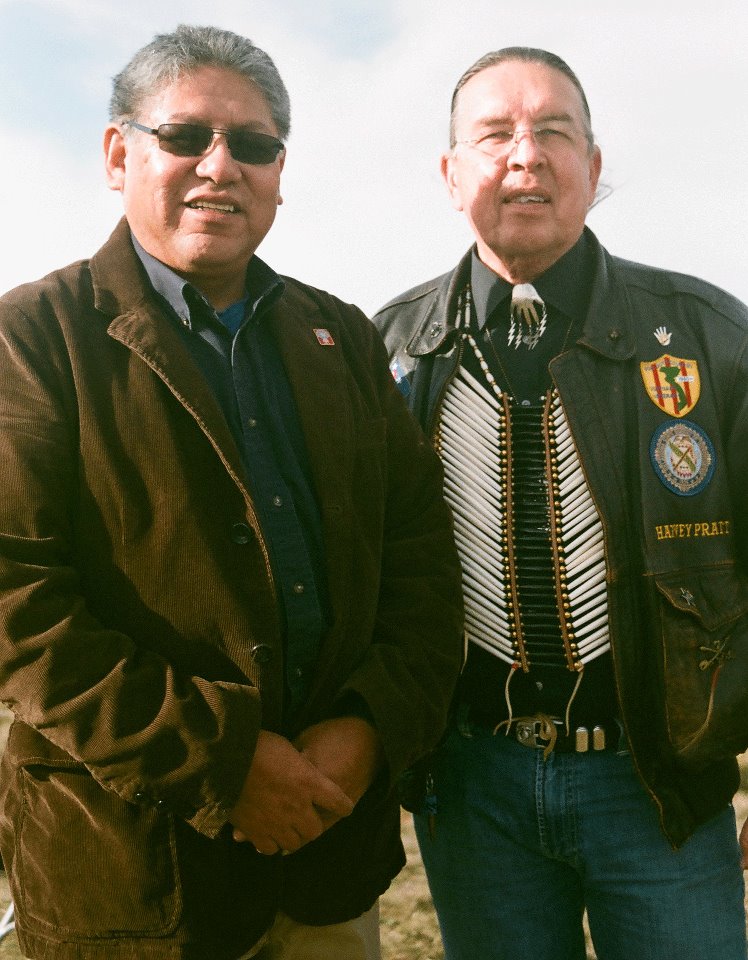
Principle Cheyenne Chief Gordon Yellowman (left) and traditional Cheyenne Peace Chief Harvey Pratt (who I met for the first time) on 11nov2011 at a Washita Battlefield NHS two-day symposium. On this day Gordon blessed the Washita village site and Harvey spoke about Cheyenne warriors of the past and today. On the 12th Gordon talked about what it is like to be a Cheyenne chief. (photo © Louis Kraft 2011)
LK comment: The NPS allowed three paragraphs for this section, and here is the final paragraph: “In September 1868, after a series of Cheyenne raids in Kansas, Major General William T. Sherman declared war on the Southern Cheyenne. Sherman’s winter campaign punished all Indians, both friendly and hostile. When Wynkoop realized that he could no longer protect the peaceful Indians, he resigned as Indian Agent in protest. He wanted no part in the murdering of innocent Indians.”
LK comment: Yikes!!! The above paragraph is true. But you have missed Wynkoop’s attempt to end the war, and worse Custer’s destruction of Black Kettle’s Cheyenne village on the Washita River on November 27, 1868, is ignored. In case you didn’t know it Wynkoop spoke before a standing room only audience at the Cooper Union in New York City damning what he considered the murder of innocent people. This is a very short paragraph and room must be made to rewrite and increase the word count.
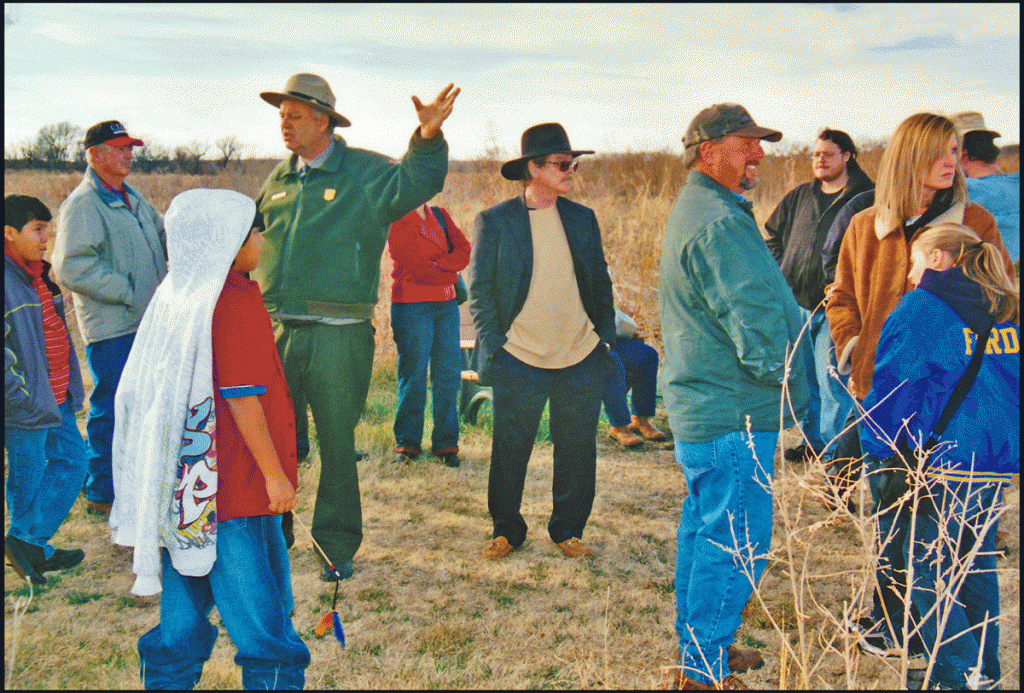
Craig Moore leads a group of people on a tour of the upper Washita Battlefield NHS trail. Moore is a ranger at the Sand Creek Massacre NHS and helped out on this last day of the three-day event (December 4-6, 2008); I gave two performances as Wynkoop on the first two days and on the third spoke about his relationship with the Cheyennes. When Moore passed Custer Hill, the location from which Lt. Col. George Armstrong Custer observed the battle of the Washita (27nov1868), a tragic day for on it Cheyenne Council Chief Black Kettle, his wife Medicine Woman Later (Voh-is-ta), Cheyenne Council Chief Little Rock, and others who did everything possible to remain at peace with the United States died. It was here that Custer learned that soldiers shot at women and children. He rushed to stop the outrage. Ben Clarke (yes, that is correct for I have seen over 500 pages in Clarke’s handwriting including signed letters and he always signed his last name with an “e”), Custer’s chief of scouts confirmed this, and Clarke was no friend of Custer. Three years later Moore spoke of Cheyenne lineage as related to the Sand Creek Massacre in November 2011. I spoke on Wynkoop’s outrage on that day, but he wanted nothing to do with me. Perhaps because I inserted a running commentary during his 2008 tour of the upper Washita, including comments about Stone Forehead. He allowed me to do it, but I don’t think he was pleased. (photo © Leroy Livesay 2008, and he gave me full permission to use this image)
LK comment: Wynkoop will forever be remembered for his attempt to end the 1864 Cheyenne war, but the Wynkoop that should forever be remembered is the Wynkoop that did everything he could to prevent innocent people from being killed for the actions of the guilty in 1868. Although this won’t be in the brochure, it should be a highlight in the brochure.
Later Life (1869-1891)
LK note: The below paragraph is in response to this final section in the NPS brochure.
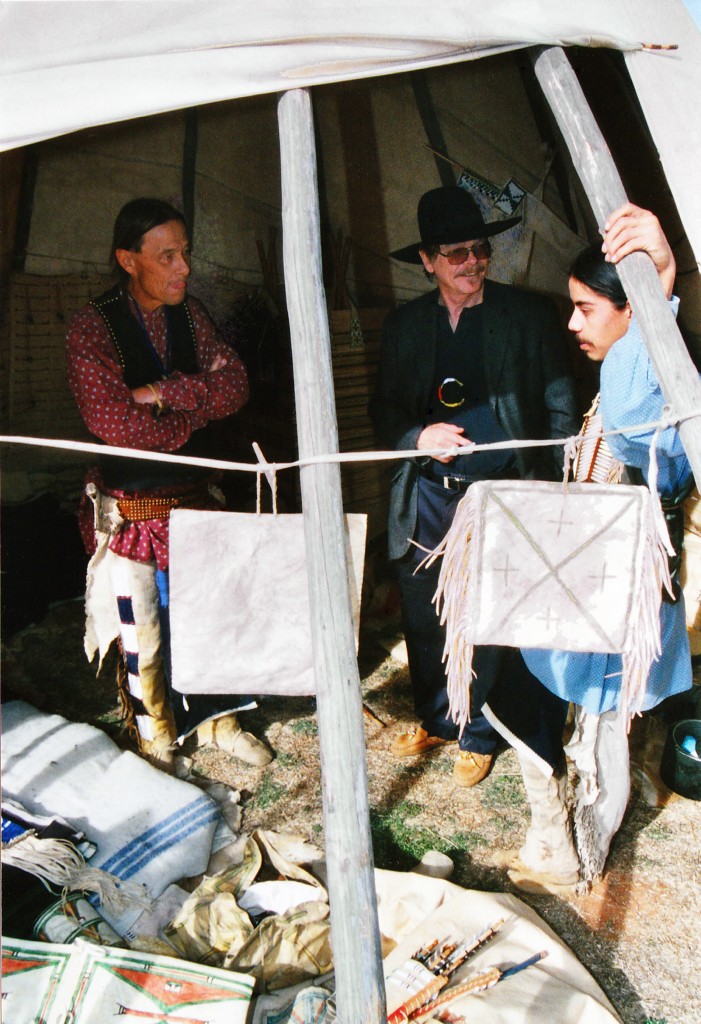
Ivan Hankla had set up his tepee at the Washita Battlefield NHS three-day symposium in December 2008. Ivan is at the left in his lodge. The fellow on the right is his nephew, Jake, who helped him at the event. The day was 6dec2008, and it was the last time I saw my friend on this earth. (photo © Leroy Livesay 2008)
LK comment: This paragraph discusses information in detail that drifts far from Wynkoop’s Indian years, and although nicely written doesn’t add value to the brochure. John Chivington didn’t become Wynkoop’s “nemesis,” for Wynkoop simply ignored the man after Sand Creek. Chivington had become a symbol to Wynkoop, the man responsible for the butchery of people that had been guaranteed safety. For the rest of his life Wynkoop refused to acknowledge Chivington other than in relation to the attack at Sand Creek, which he considered a criminal act. Yes, Chivington played a key role in getting Louise Wynkoop Ned’s pension after his death, and he said kind words about Ned.
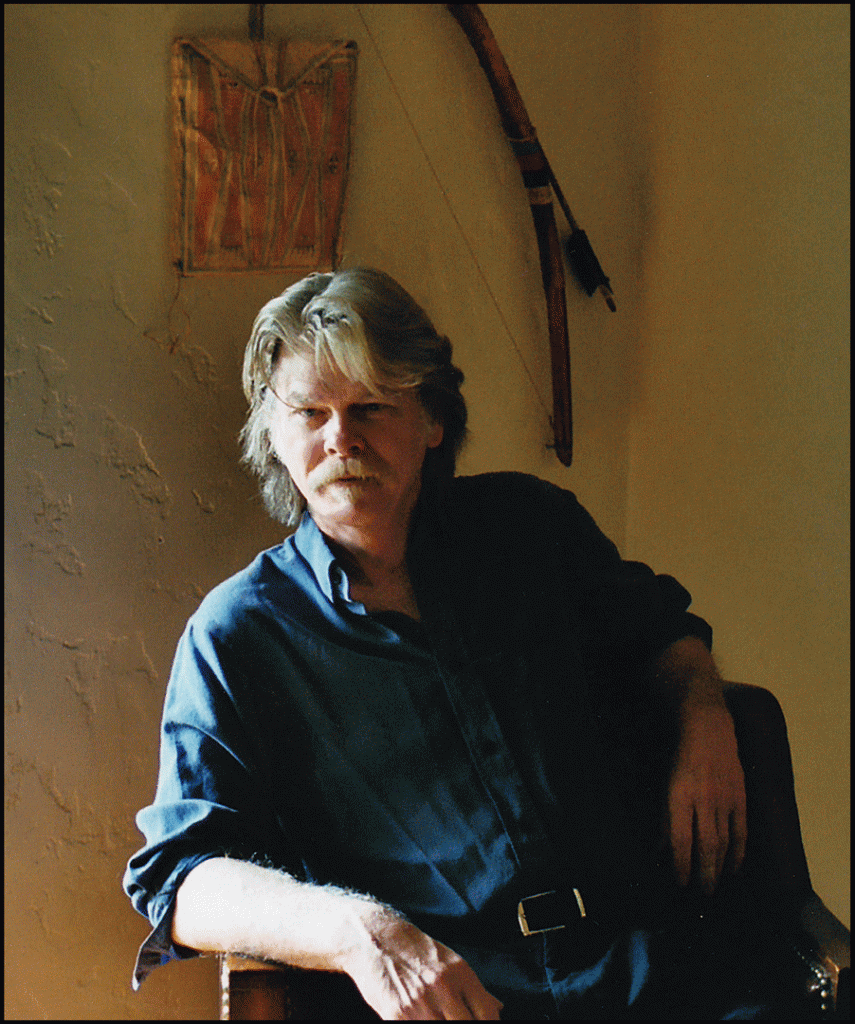
There’s always a damned “but.” … But your words have redeemed Chivington at the end of the brochure and leaves the reader with a positive final view of him. It’s good that Wynkoop was “honest and always a gentleman,” but I think here if you are going to use a quote by far the best choice is to repeat George Bent’s quote about Wynkoop. Reason: Not many white men tried to help American Indians. Wynkoop was one of the few whites that truly worked for American Indians, and Bent’s handful of words recognize this. I firmly believe that you should eliminate all reference to Chivington in the final section and go with Bent’s quote.
LK sitting near the bay window in the living room of Tujunga House (8may2004). Ivan Hankla made and gave me the parfleche above my head that April. It is a treasured gift. (photo © Louis Kraft 2004)
LK suggested rewrite of NPS Wynkoop brochure
The following is the suggested LK rewrite of the NPS Wynkoop brochure
This brochure is about Wynkoop. Often—way too often—the focus ignores this. If you want to bring his name to the fore of the Cheyenne Indian wars and point out what he did to walk between the races and work for Cheyennes and Arapahos you must maintain focus throughout the entire brochure. This can be done.
What follows isn’t egotistical. Rather it is an attempt to help you create a brochure that is not only true to who Ned Wynkoop was but will give the public that read the brochure a solid vision of who this man was and what he meant to the Cheyennes and Arapahos. … I am submitting a rewrite for this brochure (below). I hope you look at the words and decide if they present to the public who Ned Wynkoop was and why he was important to our Indian wars past.
LK note: I listed both my word count and the NPS brochure draft word count below each paragraph.
Wynkoop brochure heading
Edward W. (Ned) Wynkoop
Wynkoop brochure subheadings
“Best friend [the] Cheyennes and Arapahos ever had.”
– Mixed-blood Cheyenne George Bent
“This white man is not here to laugh at us…but on the contrary, unlike the rest of his race, he comes with a confidence in the pledges given by the red man.”
– Cheyenne Chief Black Kettle
Early Years (1836-1860)
While growing up in Philadelphia Edward “Ned” Wynkoop (born June 19, 1836) acquired a strong sense of duty, loyalty to country, and racial tolerance from his mother and older siblings. Intelligent, Wynkoop excelled at school and possessed a sound understanding of politics and diplomacy.
(LK paragraph word count, 44; NPS paragraph word count, 45)
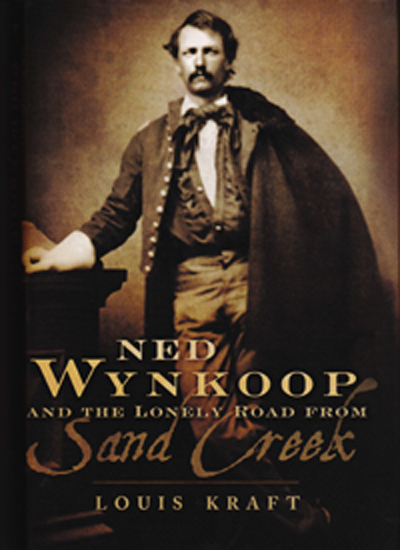
The NPS chose the 1861 standing portrait of Wynkoop by his father-in-law that was created shortly after he became a captain in the 1st Colorado Volunteer Regiment as their leading image in the brochure. Wonderful choice! My editor at OU Press, Chuck Rankin, wanted to use the great image of Wynkoop, Capt. Silas Soule, Black Kettle, Bull Bear, John Smith, and others that was taken after the September 28, 1864, Camp Weld conference ended. I spent days trying to crop the image and make it work on a dust jacket and failed. I told Chuck that I wanted the 1861 portrait on the Ned Wynkoop and the Lonely Road from Sand Creek dust jacket. I also said that I wanted it colorized. The art director didn’t colorize, but did do duotones. I couldn’t have been happier (even though he might have a different opinion). I’m certain that when I finally deliver the Sand Creek manuscript that he will begin to have heart palpitations, and cry out: “Oh Lord, no more Kraft!” That’s right, I have a sparkling reputation with production teams.
In 1856 Wynkoop followed his sister Emily and her husband to Lecompton, Kansas Territory, to seek his fortune. At this time violence predominated as Free-Staters and pro-slavery Border Ruffians battled for supremacy. To survive Wynkoop became skilled with weapons.
(LK paragraph word count, 39; NPS paragraph word count, 50)
LK note: This shortened paragraph may allow the Wynkoop portrait to move up slightly on the page.
Two years later Wynkoop migrated to the gold region to the east of the Rocky Mountains that would eventually become the city of Denver. At this time there was no town, law, or government. Although Denver began to thrive by spring 1860, Wynkoop, like many, struggled to survive as he worked as miner, land speculator, sheriff (which paid only upon conviction), and bartender. On the wild side, Wynkoop hung out with a rough crowd and became known as a “bad man from Kansas.” A professional actress named Louise Wakely caught his eye and he wooed her.
(LK paragraph word count, 96; NPS paragraph word count, 97)
Civil War Years (1861-1863)
An Act of Congress created Colorado Territory on February 28, 1861. Less than two months later the Civil War began. Rumors swirled of a Confederate invasion of the Southwest. With the gold region threatened, in June the first territorial governor, William Gilpin, created the 1st Regiment of Colorado Volunteers even though he had no War Department authorization and no funds. Although Wynkoop still fluctuated between law and lawlessness Louise had calmed him down. He enlisted, and on July 31 received a commission as second lieutenant of Company A. On August 21 Wynkoop married Louise, and before month’s end a promotion made him captain and reporting to Major John M. Chivington.
(LK paragraph word count, 109; NPS paragraph word count, 110)
In January 1862 a Confederate brigade entered New Mexico Territory and defeated Union forces at the Battle of Valverde. Orders sent Wynkoop and the 1st Regiment south to confront the invasion. The Coloradans defeated the Confederates at what has since been known as the Battle of Glorieta Pass (March 26-28). When the regiment’s commanding officer resigned in April promotions made Chivington colonel and Wynkoop major. On April 15 Chivington, Wynkoop, and the Coloradans, along with New Mexico Volunteers, defeated Rebel forces at the Battle of Peralta, near Las Lunas, and ended the Southern invasion. By November 1862 the regiment became the 1st Regiment of Colorado Cavalry. (LK paragraph word count, 106; NPS paragraph word count, 101)
Sand Creek Massacre (1864-1865)

The second NPS image in the brochure is the done-to-death line art of Black Kettle by John Metcalf (without giving the artist credit). It is a poor choice as dramatic events confronted Wynkoop at this time, including facing the Cheyenne and Arapaho battle line on September 10, 1864 (this image represents Wynkoop seeing the battle line). He not only kept his cool but he maneuvered through potential death without violence that day. This art appeared in Wild West magazine (August 2014) and I will use it in Sand Creek and the Tragic End of a Lifeway. I offered this art free of charge to the National Park Service to use in the Wynkoop brochure for the Fort Larned and Sand Creek Massacre National Historic Sites with the stipulation that it uses this credit: (art © Louis Kraft 2013)
Wynkoop assumed command of Fort Lyon on the Santa Fe Trail in early May 1864. On September 3 he saw two letters from Cheyenne Chief Black Kettle, who wanted to end the war that raged all summer. Wynkoop led 127 officers and men toward a large Cheyenne-Arapaho encampment on the Smoky Hill in Kansas to discuss peace. On the morning of September 10 Wynkoop faced a massive Indian battle line. He thought he and his command would die, but instead Black Kettle prevented violence, and he met Cheyenne and Arapaho tribal leaders in council. Although threatened with violence by Dog Man Chief Bull Bear Wynkoop remained calm (Dog Soldiers is a white-man term). Wynkoop received four white children and seven chiefs accompanied him to Camp Weld, below Denver, to discuss peace with second Territorial Governor John Evans. During the council Wynkoop and the chiefs thought that war had ended pending the decision of the U.S. government.
(LK paragraph word count, 156; NPS paragraph word count, 155)
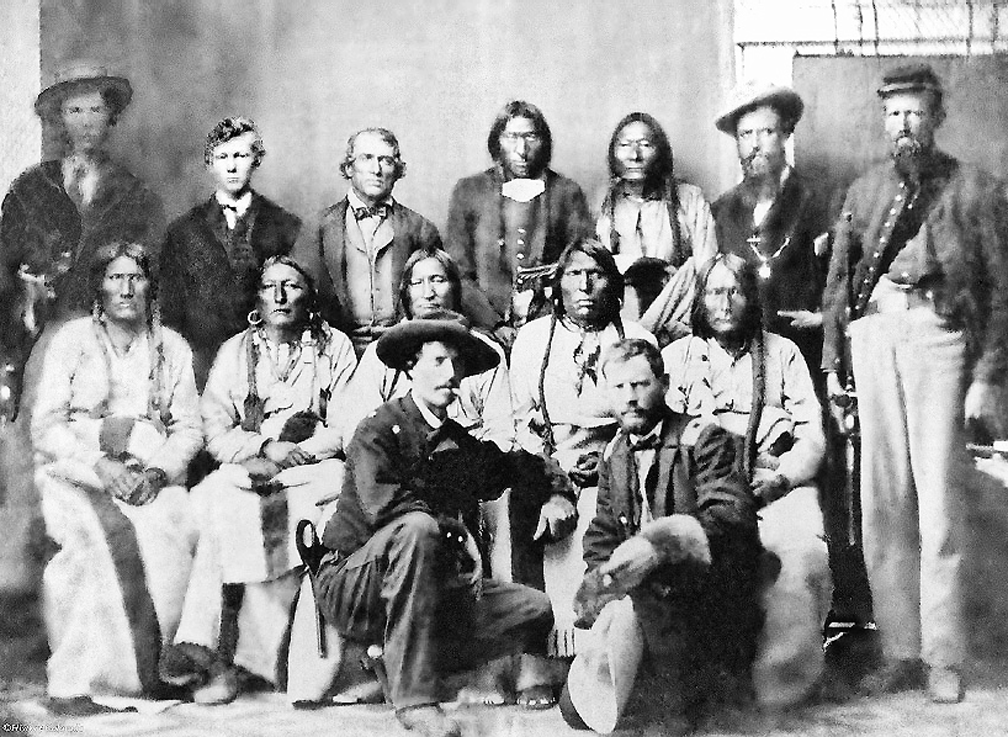
The NPS’s third image is on page 2 in the Indian Agent section. It is an “Image of a typical Cheyenne village in the 1860s.” I might as well say this here: This is a brochure on Wynkoop. It has four images and only one is of Wynkoop, and it was taken long before Wynkoop met or worked with Cheyennes and Arapahos. Hello???? I don’t think I need to say anything else about the poor choice of images. This image appeared on page 124 of Ned Wynkoop and the Lonely Road from Sand Creek (OU Press, 2011). As it has many of the leading participants in the events that led up to Sand Creek, the attack, and the aftermath it is a major image and belongs in Wynkoop’s brochure. Partial caption from the Wynkoop book: “Kneeling in the foreground are Maj. Edward Wynkoop (left) and Capt. Silas Soule. Sitting (from left) are White Antelope (Southern Cheyenne), Bull Bear (Dog Soldier), Black Kettle (Southern Cheyenne), Neva (Arapaho), and No-ta-nee (Arapaho). Standing (from left) are unidentified, Trader Dexter Colley, Trader/Interpreter John Smith, Heap of Buffalo (Arapaho), Bosse (Arapaho), Secretary of Colorado Territory Samuel Elbert, unidentified soldier. Note that Neva has sometimes been identified as One-Eye (Southern Cheyenne), Heap of Buffalo has sometimes been identified as White Wolf (Kiowa), and that Bull Bear has sometimes been identified as the fourth sitting from the left, which is incorrect as a close examination of the many images of him in later life conclusively prove.” Courtesy: History Colorado (Scan #10025492)
On November 5, 1864, Maj. Scott Anthony relieved Wynkoop of command at Fort Lyon for acting without authority and feeding warring Indians. Wynkoop set up meetings and introduced Anthony to Black Kettle and Arapaho Chief Left Hand. Anthony demanded that they move away from the fort but promised military protection. By November 17 Black Kettle’s Cheyenne village camped on a bend of the Big Sandy. A small band of Left Hand’s people also camped there. Expecting to be court-martialed Wynkoop set out for Kansas on November 26.
(LK paragraph word count, 87; NPS paragraph word count, 88)
On the morning of November 29, 1864, Chivington and approximately 675 soldiers of mostly the 1st and 3rd Colorado Volunteer Cavalries attacked the Cheyenne and Arapaho village on Big Sandy Creek. The soldiers showed no mercy and killed women, children, and old people. Many horribly. Almost all the bodies were scalped and mutilated. Somewhere between 160 and 200 Cheyennes and Arapahos died in what has become known as the Sand Creek Massacre.
(LK paragraph word count, 72; NPS paragraph word count, 80)
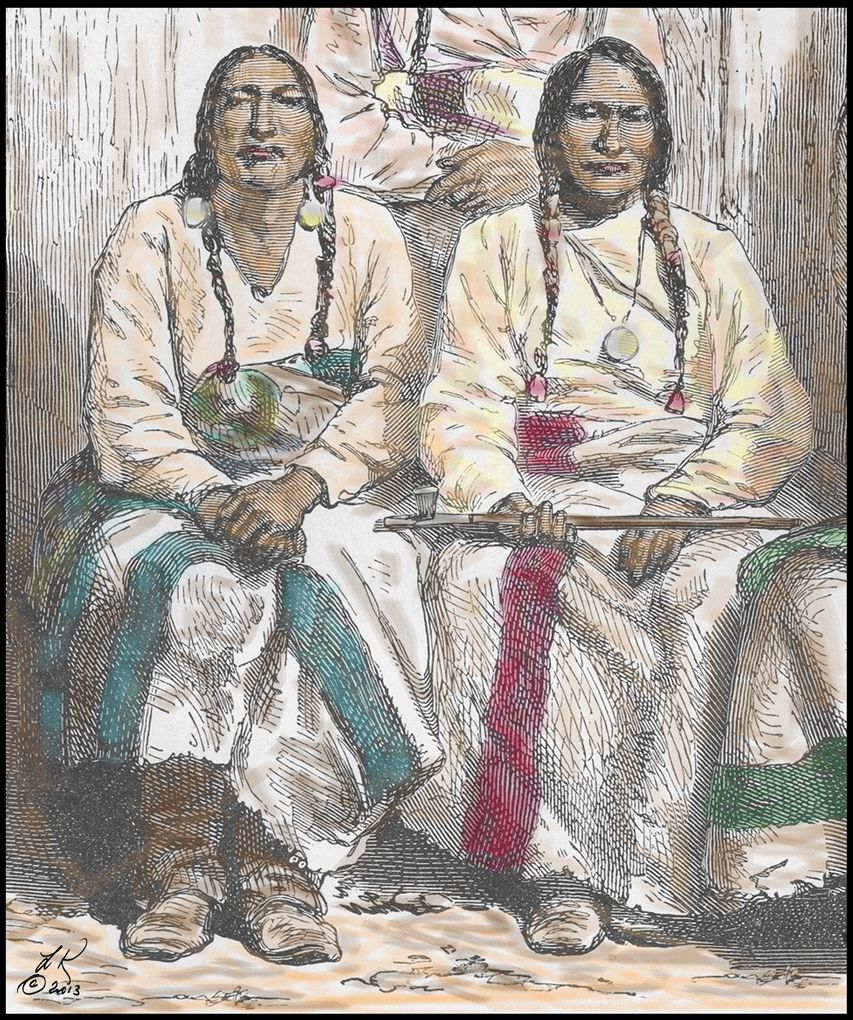
This is a detail of a woodcut that shows the chiefs that traveled to Denver and Camp Weld with Wynkoop in September 1864. It was created in the 19th century and is part of my collection. I colorized this image and offered it to the NPS as an alternate to the Camp Weld photo (the Camp Weld photo belongs in the Wynkoop brochure much more than the 1861 Wynkoop portrait). This image shows Bull Bear (left) and Black Kettle, both of whom played large roles in Wynkoop’s relationship with the Cheyennes. (Colorization © Louis Kraft 2013)
When Wynkoop learned of the attack his shock gave way to rage. He demanded an interview with Maj. Gen. Samuel Curtis, who commanded the Department of Kansas. Curtis listened to Wynkoop, who damned Chivington for the murder innocent people. Exonerated for his actions, in late December Wynkoop received orders to resume command of Fort Lyon and report upon the attack. He interviewed participants and leaned that “three-fourths of [the dead] were women and children, among whom many were infants.” Wynkoop’s report along with other reports of the massacre resulted in two Congressional investigations and launched a U.S. Army Commission investigation. Chivington’s attack was officially condemned, but as he had previously resigned his military commission he was never court-martialed.
(LK paragraph word count, 118; NPS paragraph word count, 118)
The Sand Creek Massacre resulted in an Indian war of revenge that began in January 1865. Hoping to end the war peace commissioners met with tribal leaders on the Little Arkansas River in Kansas in fall 1865. Wynkoop commanded the military escort. Instead an arrow in the back as Wynkoop expected, Cheyenne and Arapaho leaders asked he be named their agent.
(LK paragraph word count, 61; NPS paragraph word count, 58)
Indian Agent (1866-1868)
While on detached duty from the military in 1866 Wynkoop met Cheyenne and Dog Men leaders in council at Bluff Creek, Kansas (February 28-March 1) to get them to agree to railroad tracks crossing prime buffalo hunting grounds. Although threatened if Cheyennes touched the changed-1865 treaty paper Wynkoop, with Black Kettle and Bull Bear’s help, obtained needed signatures. In June Wynkoop, who now considered Indians human beings, resigned his military commission and applied to become an Indian agent. As a special agent Wynkoop fed hungry Cheyennes before President Andrew Johnson appointed him U.S. Indian agent in September 1866.
(LK paragraph word count, 97; NPS paragraph word count, 100)
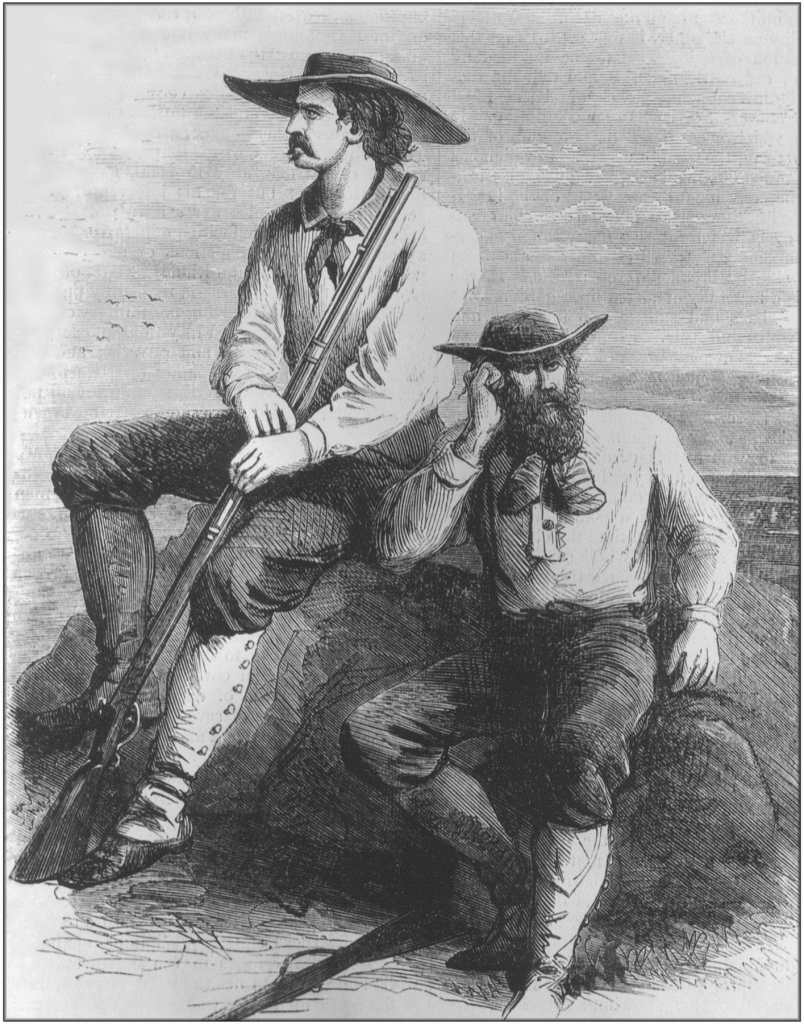
The fourth and final NPS image is a long-distance image of Fort Larned, Ks. Who cares! The Fort Larned NHS brochure features a magnificent color artistic rendering of the fort. What value does a long shot of the fort provide to the Wynkoop brochure? Nothing, absolutely nothing. This image shows U.S. Indian agent Ned Wynkoop (left) with interpreter Dick Curtis, one of the interpreters accompanying Maj. Gen. Winfield S. Hancock’s massive army as it approached the Cheyenne-Dog Man-Lakota village on the Pawnee Fork (about 35 miles due west of Fort Larned, Kans., in mid-April 1867). Wynkoop, with mixed-blood Cheyenne Edmund Guerrier, whom Wynkoop often used as an interpreter, rode between the lines and prevented violence between perhaps 400 Tsistsistas, Dog Men, and Lakotas and about 1400 soldiers under the command of Hancock. Later, after Hancock’s army camped close to the Indian village, the Indians deserted it in fear that they were about to be butchered. Wynkoop fought with Hancock for days to protect the deserted village as these people had done nothing wrong, other than fleeing in fear that they would be sexually murdered and desecrated as the Cheyennes and Arapahos had been at Sand Creek. Theodore R. Davis artwork. (Restoration © Louis Kraft 2009; in author’s personal collection)
Wynkoop established his agency near traditional Cheyenne hunting lands at Fort Larned in southwestern Kansas. The fort’s isolated location afforded an opportunity to protect his wards that desired peace. In spring 1867 Maj. Gen. Winfield Hancock, with 1400 soldiers, threatened perhaps 12 leaders of the “Dog band,” as Wynkoop called the Dog Men, during a night meeting at Fort Larned on April 12. After the council Dog Man Chief Tall Bull told Wynkoop he feared another Sand Creek. Late that night Wynkoop tried but couldn’t stop Hancock from marching toward a Cheyenne-Dog Man-Lakota village on the Pawnee Fork on the next day. When an Indian battle line confronted Hancock’s army Wynkoop rode between the lines and prevented violence. Soon after Hancock’s arrival at the village the Indians fled in fear of their lives. Wynkoop fought to save the Indians’ lodges and property, but Hancock refused to listen to him, destroyed the village, and as Wynkoop predicted started what has been called “Hancock’s War.”
(LK paragraph word count, 162; NPS paragraph word count, 163)
In August 1868 a Cheyenne-led war party killed settlers in central Kansas and started another war. Wynkoop could not stop it and resigned his commission in protest. After his friend Black Kettle (whom he called “Make-tava-tah”) died in a dawn attack on November 27, Wynkoop lashed out at U.S. government policy for what he considered wanton murder of innocent people in New York City on December 23.1
(LK paragraph word count, 67; NPS paragraph word count, 61)
1 See Kraft, Ned Wynkoop and the Lonely Road from Sand Creek (OU Press, 2011), for variations of Black Kettle’s name including what Wynkoop called him, 111.
Later Life (1869-1891)
In 1869 Wynkoop applied to become Superintendent of Indian Affairs, but because he spoke out against government policy and dared to suggest that Indians become U.S. citizens his application was denied. Wynkoop lived another 22 years and more than once attempted to again work with Indians but the U.S. government refused each request. During these years Wynkoop performed numerous jobs as he provided for his family. He died in Santa Fe, New Mexico Territory, on September 11, 1891. George Bent, who as a Cheyenne mixed-blood, lived through the violent 1860s and beyond, called Wynkoop “the best friend [the] Cheyennes and Arapahos ever had.”
(LK paragraph word count, 103; NPS paragraph word count, 103)
LK note: Wynkoop suggested making Indians U.S. citizens at the Cooper Union in New York City on December 23, 1868. See “Indian Affairs,” New York Times (December 24, 1868), 1. When Johnny D. Boggs reviewed Ned Wynkoop and the Lonely Road from Sand Creek, he wrote (in reference to Indians becoming citizens), “No wonder Wynkoop wore a gun.”
Obviously when LK next appears at a national historic site
he will be escorted off the premises by an armed guard.
Hell, that’s not so bad for he’ll soon have another life
experience that will be a first. The future is out there
and I can’t wait to walk into it.

